

NEWS
PAGE 3
Trump restores international student statuses

FEATURES PAGE 4
BU alum makes strides in Brookline Town Meeting



PAGE 3
Trump restores international student statuses

FEATURES PAGE 4
BU alum makes strides in Brookline Town Meeting


OPINION PAGE 8
“Pizzagate” and the unreliable news prevalent on social media
financials are ‘on a concerning trajectory,’ University officials say
BY THE DAILY FREE PRESS INVESTIGATIVE TEAM
On the 17th floor of the Center for Computing and Data Sciences, Boston University’s newest and most expensive building, BU administrators outlined the University’s financial troubles to a room of faculty March 31.
For months, BU’s finances have been a subject of discussion for students, faculty and staff in the wake of federal funding cuts and an increase in tuition and housing prices.
The faculty assembly was led by BU President Melissa Gilliam, Chief Financial Officer Nicole Tirella, University Provost and Chief Academic Officer Gloria Waters and other higher administration to discuss BU’s financial outlook and future.
During the meeting, which was open to faculty and staff, administrators addressed the University’s financial
vulnerability, the impact of federal policy changes and influences on operations strategy.
Tirella said though the University was not in a “structural deficit” like other universities, BU’s finances are currently on an “unsustainable path.”
“We are on a concerning trajectory where our margins are declining,” Tirella said.
University expenses are growing annually by an average of 5.6% since 2017, while revenue is growing at an average 4.8% per year over the same period of time, according to BU officials and documents obtained by The Daily Free Press.
To put it simply: The University is spending more money than it’s making.
BU’s largest expense is faculty and staff salaries and benefits, making up 61% of University spending in the 2023-24 academic year, according to data from the University’s audited financial statements.

tuition at a similar rate over the same period. Tuition costs at the University of Southern California, Boston College, New York University, Tufts University and Northeastern University are all increasing at an average rate of about 4% per year.
Post-COVID inflation, investments in technology, the graduating “bubble class” of 2025 that “offset” financial pressures and financial aid — the University’s second biggest expense at half a billion dollars annually — are factors contributing to budget issues, according to Tirella.
Another unanticipated cost for the University was the ratification of the BU Graduate Workers Union contract in October.
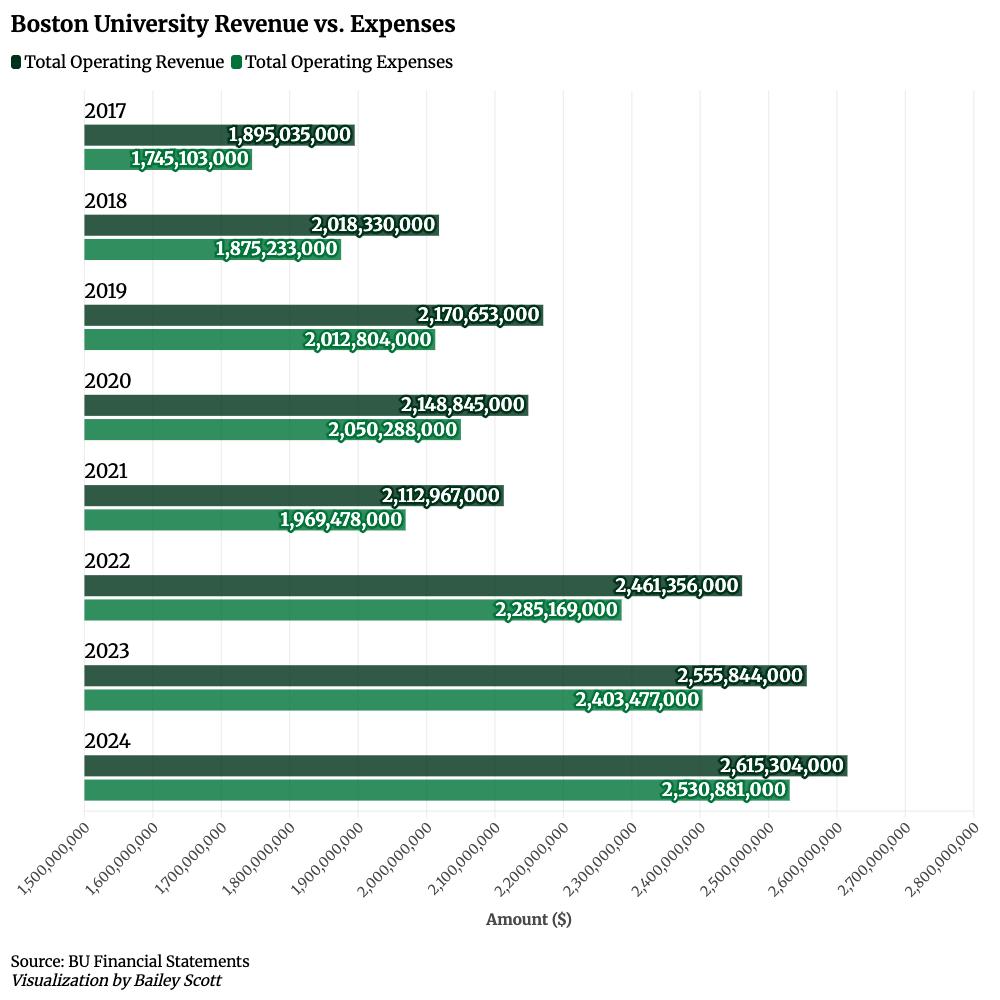
BY ETHAN POTT
Contributing Writer
The Boston University club figure skating team has found itself at the top of the collegiate figure skating scene once again. BU captured first place at the 2025 National Intercollegiate Final April 11 to 13 at the University of Notre Dame. Success is nothing new for the Terriers. This year’s title was the team’s eighth, succeeding previous championships in 2009, 2010, 2017, 2018, 2019, 2022 and 2023.
With the victory, the Terriers became the most decorated collegiate figure skating team of the 21st century, beating out the University of Delaware and their seven titles. The Blue Hens finished as the runner-up to the Terriers this year.
“When I realized that we won, we all started jumping because there was only one team left to announce,” freshman skater Keira Grice said. “When they announced our name, we all just screamed. I started crying. It was CONTINUED ON PAGE 11
According to a College of Arts and Sciences faculty member who wished to remain anonymous, Dean of Arts and Sciences Stan Sclaroff told faculty in the fall the college’s budget was sitting at a $10 million shortfall due to the added costs of ratifying the contract, as well as declining master’s candidate enrollments.
To correct the shortfall, the college had to cut admissions for 12 humanities and social sciences doctoral programs.
How does BU make money?
Most of the University’s spending money comes from tuition.
Documents obtained by The Daily Free Press show for the 2024 fiscal year, roughly half of University revenue came from net tuition and fees, which is tuition and fees subtracted by financial aid.
BU Spokesperson Colin Riley said the University is “tuitiondependent.”
BU tuition has risen at an average rate of 4.08% per year since 2018.
Other private colleges across the nation are increasing their

“The University works very hard to keep tuition increases as low as possible,” Riley wrote in an email to The Daily Free Press.
He added the BU percentage increases have been below the national average for higher education.
One option to cover expenses may be to raise tuition. John Longo, a finance and economics professor at Rutgers Business School, suggested this is one of “a handful of levers” universities can pull during times of financial stress.
“Perhaps the one that most negatively impacts students is to raise tuition and room and board fees,” he wrote in an email to The Daily Free Press April 27.
Alternatively, Longo suggested universities could increase class sizes, use the endowment, freeze merit pay for faculty and staff, lay off staff or grant less generous financial aid for undergraduate and graduate students to offset financial issues.
Faculty frustration Gilliam announced in a letter March 26 that merit pay for faculty and staff would freeze for the 2026 fiscal year.
During the March 31 assembly, a faculty member asked if the University would retrospectively unfreeze merit pay or go on to freeze retirement contributions if their financial troubles end.
During the pandemic, the University did this, and Faculty Council Chair Kevin Smith said faculty retirement accounts never
recovered.
“All of us who were here during COVID took a massive financial hit by there being no contributions to University contributions to our retirement funds,” he said. “That money, that contribution to our retirement fund we have never made up.”
According to Tirella, retirement contributions are not being paused. She also said the University is “trying to understand all the alternatives that we have on the table” before it announces any layoffs or workforce reductions.
Smith also expressed concern that faculty were not being included in University decisions about the budget and programs being cut.
Gerry Leonard, a BU professor of law who spoke at the March 31 assembly, said he endorses University-wide cuts if the college calls for budget adjustments as long as faculty are brought into the decision-making process.
“We all care about preserving BU as the university we know it to be, one that really is committed to the best education for its students,” he said in an April 28 interview. “We are all willing to sacrifice if sacrifice is necessary at some point in resisting the agenda of the national administration.”
Gilliam was open to speaking to faculty and met with them, but Leonard said he and others “have not gotten the kinds of specific information and assurances” they hoped for.
The remainder of this article can be found on The Daily Free Press’ website.
This article was written by Maya Mitchell, Bailey Scott, Chloe Cramutola and Karyna Cheung. Nicole Abrams, Madyline Swearing and Aayushi Datta contributed reporting.
BY ELIZABETH MEHLER Associate Campus Editor
Since President Donald Trump took office, efforts to enforce stricter immigration policies have impacted Boston University’s large international student population.
BU confirmed a number of student visas were terminated April 8, adding to the growing number of terminations nationwide. BU said the International Students and Scholars Office is routinely reviewing the Student and Exchange Visitor Information System to stay up-to-date on students’ visa status.
The arrest of Rumeysa Ozturk March 25, a Turkish doctoral student at Tufts University who was taken off the streets of Somerville by plainclothes U.S. Immigration and Customs Enforcement officers for publishing a proPalestine op-ed in The Tufts Daily, caused widespread fear about international student safety among the BU community.
Whether the Trump administration has the power to detain international students for involvement in protests continues to be debated in courts, but BU clinical law professor Karen Pita Loor said the First Amendment does not “differentiate” between citizens, non-citizens and international students.
“[The First Amendment] guarantees everyone freedom of speech and freedom of expression,” Pita Loor said. “But this particular administration,
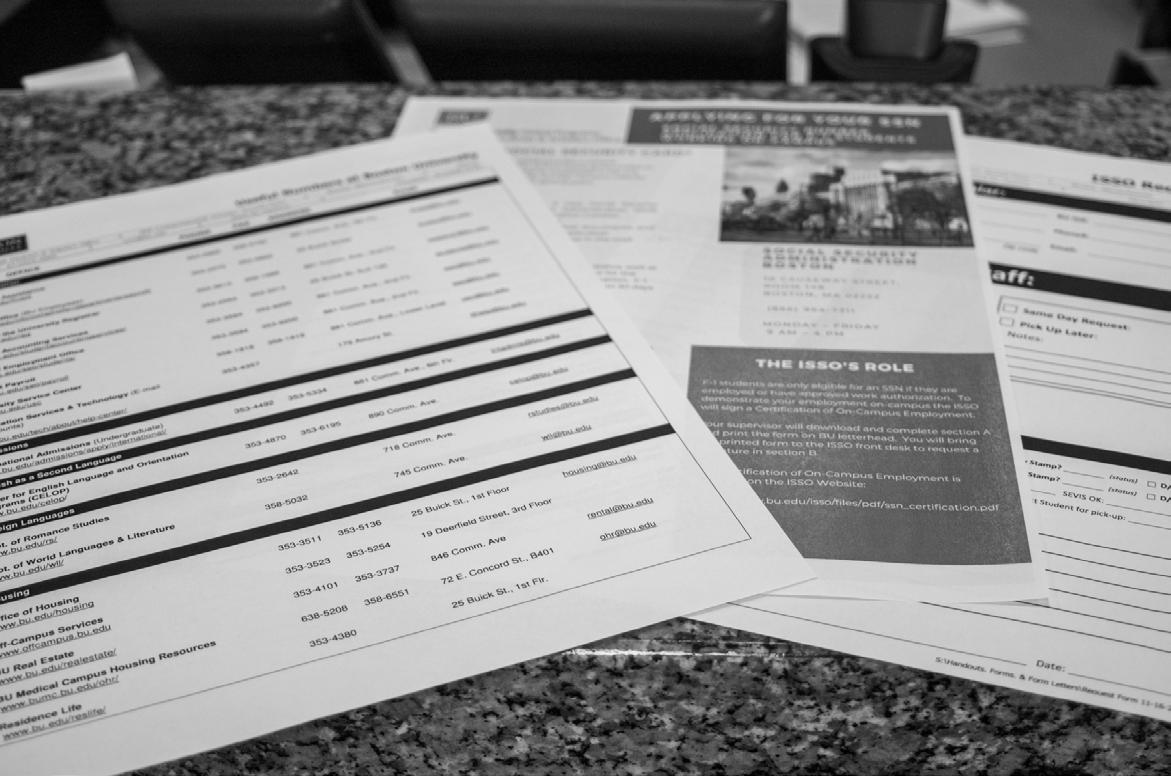
HOLLY GUSTAVSEN | PHOTO CO-EDITOR
Informational handouts and forms from Boston University’s International Students and Scholars office. Multiple student organizations at Boston University are calling for BU to declare itself a sanctuary campus in light of the Trump administration’s stricter immigration policies.
despite … constitutional limitations, is really testing the boundaries of their power.”
BU student organizations, including BU Young Democratic Socialists for America, BU Prison Outreach Initiative and the Quinobequin Student Front for Palestine — formerly known as Students for Justice in Palestine — have organized protests and walkouts throughout the semester calling for BU to declare itself a sanctuary campus.
Junior Mary Haddad, who is involved with student activism on campus, said a sanctuary campus is needed to protect immigrants and international students who are politically active.
“We can see that there’s a consistent pattern in not only targeting immigrants, but also targeting immigrants or people
with visas who are politically active, and who are denouncing the American Imperial empire,” Haddad said.
On April 26, U.S. Attorney Mark Sauter reported some SEVIS records were being restored, but the Department of Homeland Security clarified it was only for people whose visas have not been revoked.
Among those who did have SEVIS records restored was Columbia University student Mohsen Mahdawi, who was detained for pro-Palestine protests and released April 30.
Professor Nathan Phillips organized a protest at Marsh Plaza April 30 to protest the “shameful abduction of university members.” Phillips said the news of SEVIS records being restored and Mahdawi
being released indicates “the tide start[ing] to turn,” but further protest is needed.
“The 1,000-plus visa revocations were restored, due to vocal, loud pushback and legal power ... I think it needs massive outcry to turn into a tidal wave,” Phillips said. “The release of Mohsen Mahdawi was evidence that when we speak up and push back on bullies, they back down.”
Proposed travel bans have also left some international students unable to return home or be visited by family, including a BU senior whose mom is unable to attend her graduation due to a Trump executive order banning travel from Myanmar.
BU Medical Campus Assistant Professor and Director of Graduate Studies Jeannine Foley, who joined Phillips’ April 30 protest, said she anticipates Trump’s policies will result in a loss of international students coming to BU.
“We’re going to lose a lot of international students and that’s a really scary thing, because they contribute significantly to our community,” Foley said.
Foley said the medical school experienced a student from Greece turning down an offer to BU, due to safety concerns about the status of international students in the U.S.
“Our program was their top choice, but they’ve decided to take another opportunity in a country that is safer for international students,” Foley said.
BU launched a Support Pathways Initiative April 25, in
an effort to support international students.
This initiative is intended to serve as a resource hub, offering free one-time confidential legal consultations with an external immigration attorney, and other materials, like resources on maintaining student status, oncampus housing support and mental health support.
Haddad said while this effort is a step in the right direction, it’s still “less than the minimum.”
“Guiding towards resources is not the same as providing,” Haddad said. “You made a list, congratulations. That’s not doing the work to protect BU.”
Pita Loor said it is “not enough” to provide international students with a one-time, free consultation with an immigration attorney.
“Whether or not someone is represented makes a huge difference regarding the outcome of their case,” Pita Loor said. “[BU should] actually guarantee that [international students] will be represented on immigration issues.”
Phillips said the initiative is a “great step,” but criticized the University’s lack of communication regarding how staff can support international students.
“I have international students in my classrooms, I have international students I advise and I have gotten nothing from the administration,” Phillips said. “I don’t even know how to take care of my own students, because there’s been no guidance and basic information.”
BY DANIELA GINSBURG DFP Writer
The Jumpstart program, which partners with BU Wheelock College of Education and Human Development, was instructed to slow down operations and end its partnership with BU by May 31 in wake of cuts to federal funding and diversity, equity and inclusion programs with AmeriCorps.
The grant-funded program serves as a federal work-study, allowing university students to mentor children ages 3 to 5 in Boston community preschools.
Students who train under the program act as members of AmeriCorps.
After completing 300 hours, members receive education awards where students can pay educational expenses, repay qualified student loans and receive forbearance of accrued interest payments.
Alondra Hernandez-Cruz, the community engagement coordinator for Jumpstart at BU, wrote in an email to The Daily Free Press that Jumpstart has deeply impacted her since she first began as a team leader, helping her discover the aspects of education she is most passionate about.
“I learned as much from the children as they did from me,” she wrote. Hernandez-Cruz wrote that
student workers would face “significant” impacts from the cuts.
Student workers under Jumpstart “receive session plans, books, and materials to lead lessons twice a week focused on cultural awareness, socialemotional learning, and cognitive development,” Hernandez-Cruz wrote.
“This isn’t just a job — it’s an opportunity to make a difference,” she wrote. “[Students] put in countless hours, not just in sessions, but thinking about how to support these children holistically. Taking that away feels unfair.”
Massachusetts Attorney General Andrea Campbell’s office joined a coalition of 23 attorneys general in filing a lawsuit against the Trump administration’s grant termination and dismantling of AmeriCorps, arguing the move was a violation of the Constitutional principle of separation of powers.
Kerry Fargnoli, the Jumpstart site manager, said the program has more than 35 BU work study students across seven Boston preschool classrooms, providing services to more than 120 children.
“It was a really valuable program for BU students to earn their federal work study, gain valuable life skills, gain classroom experience and support young children in their language, literacy and social, emotional
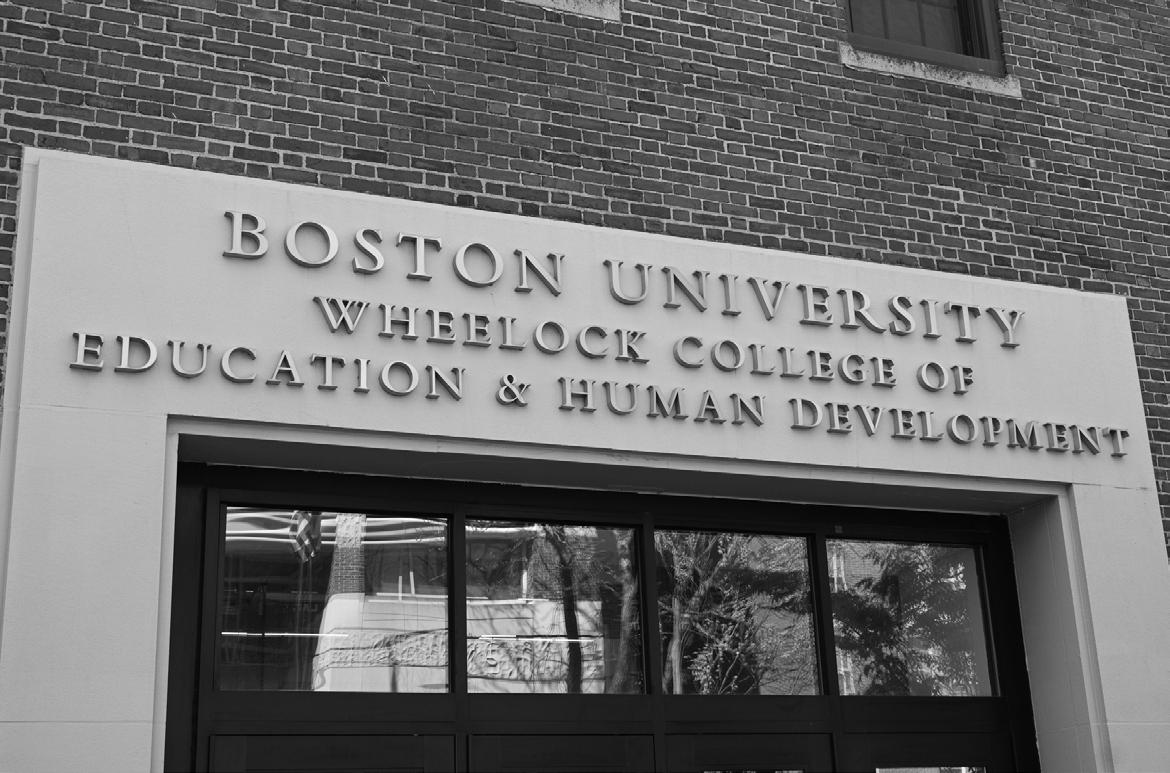
development,” Fargnoli said. “That, to me, is the biggest loss.” Fargnoli said Jumpstart would not renew its partnership at BU because there has been “uncertainty with funding across the board.”
Hannah Granger, a team leader for BU’s Jumpstart site, said the program allows her to help in classrooms with children who have special needs or who are on Individualized Education Plans.
The program creates trusting bonds with children, paving the way for early detection of developmental or learning challenges, Granger said.
“It hurts me because the motto
for Jumpstart is ‘children first,’ and this is very clearly not putting children first,” Granger said. “This is putting protectionism first, and money first.”
Granger received a message in a group chat with fellow team leaders from Fargnoli Monday saying the California Jumpstart program received an immediate termination. California Jumpstart workers only received a portion of their awards.
Jumpstart members received an email from Fargnoli later that day saying they had until May 30 to complete their required hours towards their educator award.
“This outcome is deeply
saddening, but changes in federal funding have played a significant role in this decision beyond our control,” Fargnoli wrote in the email to Jumpstart members.
Hernandez-Cruz wrote the impact stretches beyond students and the University, also impacting preschoolers, teachers and administrators.
“I’m unsure whether the children — especially those who’ve been with Jumpstart for years — fully understand what’s happening,” she wrote.
Gina Hutchinson, head of marketing communications and brand at Jumpstart, emphasized the organization is in active discussions with BU and other University partners to continue to maximize its impact on early childhood education.
“We are evolving, not ending, our program implementation and partnership with Boston University,” Hutchinson wrote in an email to The Daily Free Press.
Hernandez-Cruz wrote that many other programs are being impacted by federal cuts, and she urges people to educate themselves on how communities beyond their own are affected by the current policies and administrative decisions of the federal government.
“Knowledge is power — and action begins with awareness,” she wrote.
BY TRUMAN DICKERSON AND SAMANTHA GENZER City Co-Editors
While Adri Pray, editor-in-chief of Emerson’s independent student newspaper, The Berkeley Beacon, covered a Boylston Students for Justice in Palestine protest at Emerson College April 24, she was shadowed by two protesters who covered her camera and face with Palestinian flags.
“They had two people on me the whole rally, essentially blocking my view anywhere I would walk,” Pray said.
The rally was held in part to protest an article published by The Berkeley Beacon, in which Beacon reporters Pray and Yogev Toby compiled more than 10 hours of body camera footage to assemble a detailed timeline of the April 25, 2024 police raid on a pro-Palestinian encampment. The Beacon published roughly five minutes of the footage.
Later during the rally, a protester approached Pray, telling her she would never “be a real journalist,” and her “‘dumba— article isn’t going to do s—’” for her as a young professional.
“I definitely got the worst of it out of the Beacon people,” Pray said. “This is a reaction that I want to emphasize we have never gotten before.”
Boylston SJP — an unaffiliated Emerson organization — previously wrote in an Instagram post the Beacon “made a deliberate choice” to put the “community at risk” by publishing their article.
“The Beacon continues to launder state surveillance and zionist narratives as ‘reporting,’” the post reads. “Their record

speaks for itself: misinformation, omission of critical context, reckless publication of students’ full legal names without consent.”
The post also attacks Toby, an Israeli-born Emerson student who served as a combat photographer for the Israel Defense Forces’ Spokesperson unit, calling him a “military propagandist.”
This controversy — among others surrounding media coverage of student organized proPalestinian events — has drawn renewed attention to journalists’ role in balancing public interest with individual safety in a political climate where student activists increasingly face legal consequences.
“This story was necessary because it can’t lie,” said Pray. “The footage doesn’t lie. Police body camera footage is an important accountability tool.”
Pray said she tried to afford SJP members the opportunity to view
the footage prior to publication after they voiced concerns “that people would be identifiable,” but they refused.
“We were not dismissing them in any way,” she said. “We were trying to be conservative about the kind of force we were showing and also who we were showing in these vulnerable positions … Even though it is public record, it’s also a matter of public decency.”
Boylston SJP has been on Emerson’s campus since the Oct. 7, 2023 Hamas attack on Israel. Pray said the Beacon has published op-eds written by SJP members, concealing their identities.
“We wanted to protect them,” Pray said. “It was especially important that we do that after the federal investigation into Emerson became apparent.”
Ledia Hysenbegasi, a student photojournalist at Emerson, said the demonstrations started off as “peaceful protests,” but as
tensions with the war increased, the organization’s activities grew to include vandalizing Emerson property and stopping traffic.
“Specifically, a lot of people do not like SJP because of how they protest, not what they protest,” Hysenbegasi said.
Douglas Struck, a senior journalist-in-residence at Emerson, said the supposition that the Beacon’s reporting endangered students is “simply wrong” and “amazingly inaccurate.”
“It is inaccurate because if you look at the story in question, not a single image shows the face or depicts the voice or any other defining characteristics of any of the students who were involved in the protest,” he said.
Struck reported in the Middle East for 16 years, during which he visited Gaza “dozens of times.”
Boylston SJP is “shooting themselves in the foot” by attacking the Beacon’s coverage, Struck said.
“The student paper has been the only outlet for thorough and complete coverage of this whole issue and the protests,” Struck said. “If it weren’t for the Berkeley Beacon, the Emerson community would not know what was going on and what had gone on during those arrests.”
Dan Kennedy, a professor of journalism at Northeastern University, said the Beacon’s choice to publish bodycam footage did not pose any ethical concerns, since no protesters were identifiable in the footage.
“Bodycam footage is a public record,” he said. “News organizations are going to use any public record if they think it advances public understanding of an important issue.”
One of the four major principles in the Society of Professional Journalists’ Code of Ethics is to “minimize harm,” Kennedy said.
“If you report that the mayor is taking bribes from the trash collection contractor, you are harming the mayor, but it’s worth doing,” Kennedy said. “You’re telling an important story that the public needs to know in that situation. That’s why it says minimize harm, rather than eliminate harm.”
Kennedy said he first noticed student journalists facing backlash six or seven years ago for photographing protesters in “recognizable ways” — a shift he discussed with his journalism classes at the time.
During an anti-Trump protest in Boston a few years ago, Kennedy said he photographed protesters’ faces without hesitation.
“A lot of us were embracing what had traditionally been the ethic, which is if you don’t want your picture in the paper, don’t protest,” he said. “It was a fairly hard-line position that we all took.”
Those norms are shifting, Kennedy said. At a recent protest at City Hall Plaza in support of Tufts University student Rümeysa Öztürk, who was arrested by federal immigration authorities, he said he consciously avoided photographing faces — the first time he’d ever done so in his reporting career.
“Now, we’re in an era where you really do have to worry about people being picked up and deported if they are recognizable in any way,” Kennedy said. “It’s just a completely different mentality.”
BY LIAM DUNNE Associate City Editor
The Trump administration announced April 25 it would reinstate international student visas, leaving many concerned for their legal status.
The announcement comes after more than 1,500 student visas were abruptly canceled over the past several weeks. Until immigration officials create a new review system for the termination of visas for international students and professors, they will retain their legal status, according to The New York Times.
Judy, a graduate student from China who requested anonymity over fears about her own visa status, said she was anxious and uncertain in the wake of the revocations.
“What they could do can really change so many people’s lives, but they didn’t take this seriously,” she said. “It makes me feel so mad.”
A BU senior and member of a Latino club on campus who requested to remain anonymous out of fear for safety, described the visa revocations as ironic and contradictory.
“The most important thing is that they came here legally, which is sort of the main problem
that the Trump administration has with migration,” he said.
“You emphasize so much legal migration, and then you remove the tools for that legal migration to happen.”
The BU senior, who is an American citizen born in Florida, said he is grateful for his status, which allows him legal protections that many others in his Latino club do not have.
“Many of them cannot go back home or were not able to go back home for a spring break or any sort of break or any family emergency that occurred throughout these past months,” he said.
He said many of his friends are facing hardships with the policy, since they’re unsure when their families will be able to visit them in the U.S. or when they’ll be able to travel home to see their loved ones.
Tahirah Amatul-Wadud, an attorney and executive director of the Council on American-Islamic Relations Massachusetts, said the administration aims to “quiet” college students, an effort which she sees as accomplished.
“It’s had the effect of scaring students, scaring families, and the result is to quiet, silence people
who feel vulnerable, because they don’t want this to happen to them,” Amatul-Wadud said.
Even with the reinstatement of student visas, the damage has already been done, she said.
“We’ve had students who are worried that maybe a protest they went to or social media posts that they made 12 to 18 months [ago] puts them at risk for some sort of a revocation,” Amatul-Wadud said.
Judy said many students she knows who had their visas revoked now feel differently about life in America, and some plan to go back to China.
“They just feel this is not the country they wish to stay [in],” she said. “People come to the United States because they want a better life. They want something that they couldn’t get from their home country, like the freedom, the human rights, the civil rights.”
Amatul-Wadud discussed the arrest of Tufts student Rumeysa Ozturk earlier this year, highlighting video footage that captured the moment she questioned the identity of the plainclothes ICE agents. Rather than respond, the agents proceeded with the arrest, she said.
“At that point, when I watched
that video, I realized that any ‘know your rights’ [cards] that I’ve given to students, it doesn’t matter what your rights are,” AmatulWadud said.
She expressed concerns with the legality of the revocations, which often are done without due process and target political speech.
“This country was founded on religious freedom and freedom of speech,” she said. “To sit here in 2025 and see somebody being smashed off of their college campus because of political dissent doesn’t sound like the American way.”
Carol Rose, executive director of the American Civil Liberties Union Massachusetts, wrote in a statement to The Daily Free Press that the “unlawful termination” of student visas “struck terror in international students across the country.”
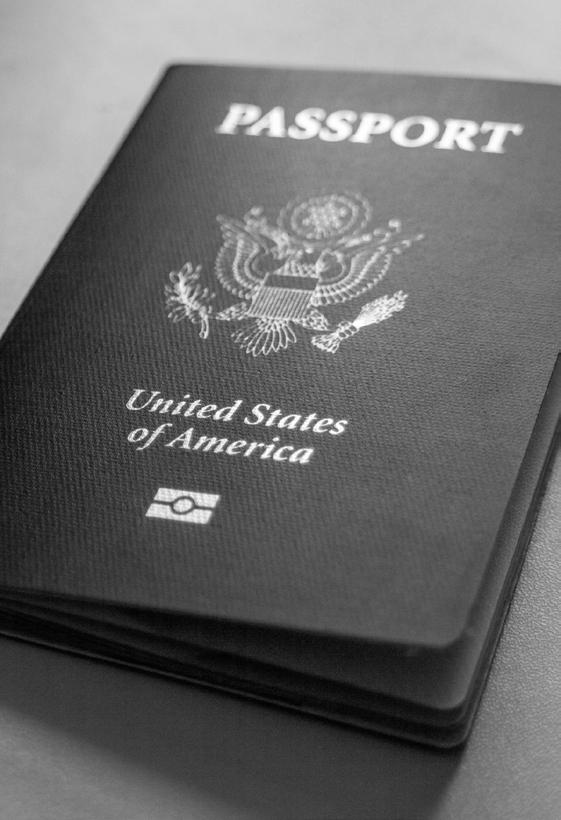
HOLLY GUSTAVSEN | PHOTO CO-EDITOR
A passport issued by the United States of America. Students have expressed concern over the legality of the Trump administration’s recent visa revocations, which have temporarily been reinstated.
“ACLU affiliates have brought over a dozen lawsuits against this move — and now the administration seems to be reactivating the SEVIS records of at least some students, allowing them to continue their studies,” Rose wrote. “International students and scholars are a vital part of our universities, our economy, and our nation.”
For Judy and the BU senior, the future of student visas and the legal status they provide and protect is unpredictable.
“The only thing that remains true at all times is hope,” he said. “I would tell everybody to not lose their hope.”
BY JOHN TATUM DFP Writer
Since Matthew Teitelbaum joined the Museum of Fine Arts as its Ann and Graham Gund Director in August 2015, over 8.3 million people have experienced the museum’s collection and exhibitions.
Over the last ten years of his leadership, Teitelbaum, who will step down in June, has worked to refocus the museum on its mission to become a more inclusive institution for the city.
Lisbeth Tarlow, who currently serves as an Honorary Trustee, was the chair of the Board of Trustees when Teitelbaum was selected as director.
She said that in searching for a new director for the museum, the trustees were ready to “take the museum to a new level” by introducing it to wider audiences.
“We felt that it wasn’t really paying attention to the next generation and to the broader community,” Tarlow said. “So we knew we had a phenomenal collection, we had a great base, but it was time to really be part of the community.”
Through a strategic plan
enacted in 2017 called “MFA 2020,” the museum began implementing a number of new methods to reach out to wider audiences and invest in the future of museums.
One way the MFA shifted its perception in the community was through its change in visual identity.
In 2022, the MFA moved from more formal serif type to bold, modern text and pops of color — led by the tagline “Here All Belong.”
“[It] was permeated in our strategic plan, that notion of being a more welcoming institution,” Teitelbaum said.
“[We] then introduced our new visual identity, which came out of the strategic plan, which was about openness.”
But in making that idea a “lived value,” as Teitelbaum said, there were more changes to be made.
“You can do that in terms of admissions policies. You can do that in terms of hours of operation…but you also have to do that with your staff,” he said.
“You want to get different life experiences. You want people talking to each other, because the more diversity, the better the
outcome.”
One way that the MFA is working to increase diversity is the introduction of their “MFA Pathways” program in which all interns are paid.
Teitelbaum said that while many people might still intern at the MFA even if it was unpaid, not everyone has the opportunity or the means, so paid internships are “the clear expression” of the museum’s value of diversity.
The Senior Director of Academic Engagement and Research, Dalia Habib Linssen, said that one of the program’s major goals is “understanding that the future of museums is closely aligned with and reflected by their communities.”
Linssen, who is an alum of the BU Graduate School of Arts and Sciences, said, “[This] goal is centered around mitigating barriers to professions in museums for students from all different kinds of backgrounds, and one of the drivers of that goal is compensation.”
Linssen also credits Teitelbaum for his support of the program since its introduction.
“Matthew’s been an incredibly strong champion of this
program,” she said. “His support for the program really grows out of his deep belief that this is a museum for Boston, and [he] is really connected to the role of community in the future of museums.”
As he is preparing to step
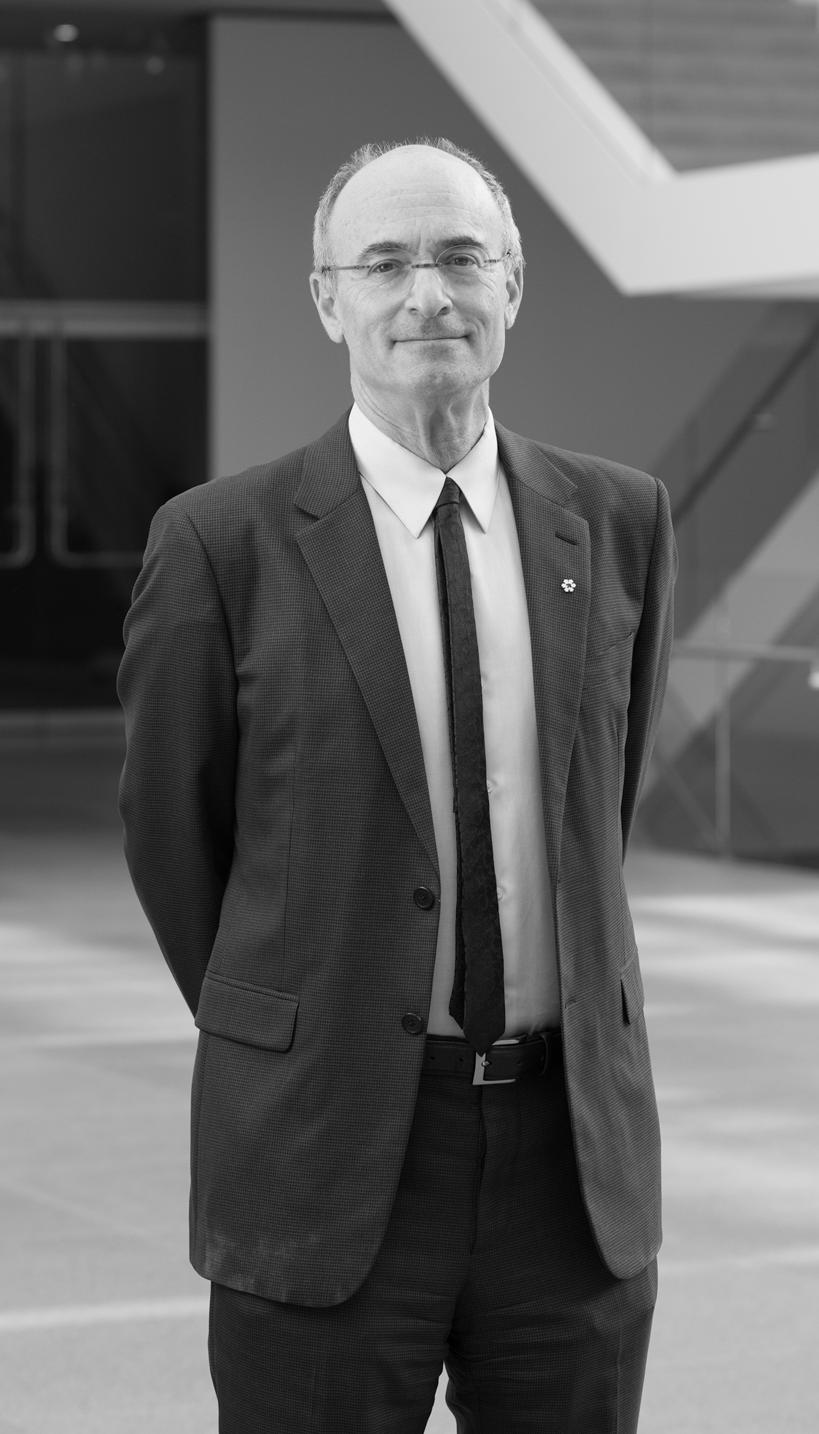
down with long-time curator Pierre Terjanian as his successor, Teitelbaum says that he is feeling a sense of pride.
“I’m feeling connected to people very much,” he said. “I have moments when I think I’m really going to miss this…they’re real moments, but I’m going to do something else, and I wanted to change the chapter.”
So what will the next chapter look like?
“When I shared with the board my intention to step down, I said that sometimes you have to give up something you love to discover something about yourself,” he said.
Teitelbaum described that his plans for the future are in teaching, writing and advising. But what he is most excited about, he said, is the notion of “being engaged with the next generation.”
“[I am exploring] how I can help share my experiences to create a framework for the way in which younger colleagues, newer colleagues can think about the future of the profession,” he said. “That has something to do with helping people understand what the future of museums might be.”
BY BRIAN CHAN Contributing Writer
Though Anthony Buono, an undergraduate and graduate alum from Boston University College of Arts and Sciences, was always interested in politics, he never thought he would become a politician.
“It doesn’t seem like [politics] is something that a normal person should be able to do,” he said.
“But I’ve learned it is.”
Buono, who studied Math and Statistics and graduated with his Master’s in 2022, ran for Brookline Town Meeting, the legislative arm of Brookline’s government, that same year.
His victory made him the youngest member to be elected at the time.
Over his tenure, he assisted residents with rent, as well as advocating for accessible and green schools in Brookline, he said — all while balancing the budget.
Currently, he is president of the Town Meeting Members Association, which runs educational events for members, and serves on the Capital and the Administration and Finance subcommittees.
While Buono grew up talking about political issues with friends and family members, he became more motivated to join politics when listening in to Bernie Sanders’ 2020 Democratic primary campaign.
“That is what spoke to me. It is the deep and radical empathy that flew through that campaign of being willing to fight for
anybody and anyone, even if you never met them, because you understood that if you fight for their best interest and they fight for your best interest, then we’re all going to be way better off,” he said. “I felt an obligation to act.”
After Sanders’ campaign, Buono began volunteering, canvassing and phone banking for progressive causes.
Those experiences, he said, helped him talk politics to others even if he disagreed with them.
“That’s a skill I’ve taken with me today. [It’s] helped me a lot in
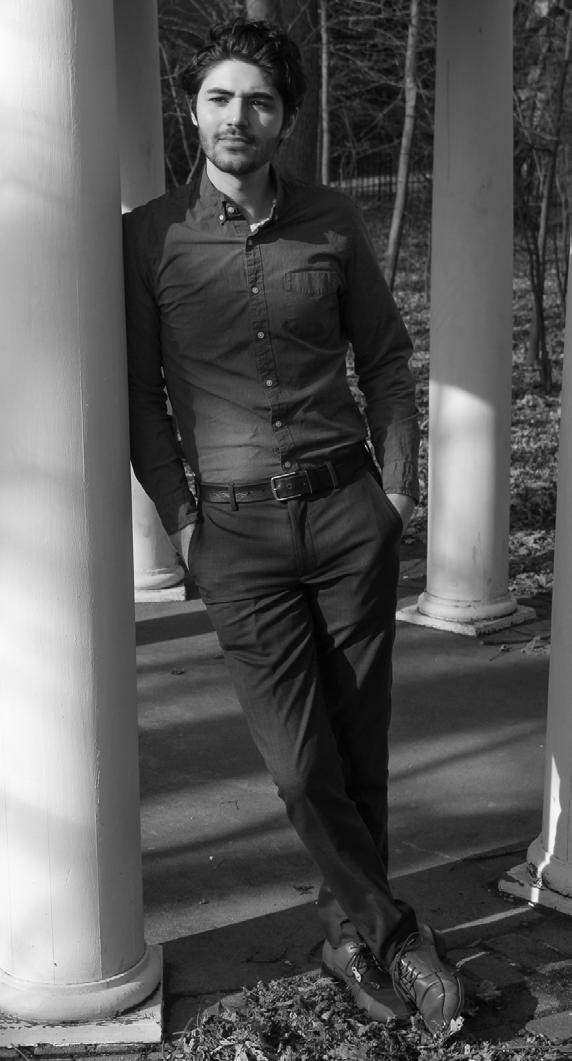
my political career,” he said.
During his time at BU, Buono joined and later became president of BU’s chapter of the Young Democratic Socialists of America.
Buono said many YDSA events inspired him to “look at injustice at a different angle.”
He also started a campaign for BU to provide free laundry. The idea, Buono said, originated when he was thinking about achievable and effective ways BU could help its students.
Having free laundry, Buono said, would be a “good and easy win.”
As part of the movement, Buono and the YSDA created a petition that more than 3,000 students signed, negotiated with BU’s administration and organized a protest outside Marsh Chapel.
While BU ultimately did not implement free laundry, Buono said the progress the movement made was an encouraging sign in itself.
“It showed, at least some of the people around me that I was able to talk to, that these different institutions that we’re part of can provide better things to us if we organized effectively,” he said.
After graduating from BU, Buono was lost with what he should do politically.
“There’s no more doors to knock on. There’s no more people to call. Where do I go? What do I do?” he said.
Eventually, someone from Buono’s local Democratic Party convinced him to run for Brookline Town Meeting — a
position, he said, that would let him tackle a “massive” housing crisis in New England.
Jonathan Klein, a Brookline Town Meeting member who had gotten to know Buono when they were both running for Town Meeting, realized they had a lot in common. The two worked together during the campaigning period.
“I think he’s not afraid of change,” Klein said. “He’s looking forward to the future and the changes we need to make Brookline keep working in the future.”
Running a campaign as an untested newcomer, especially by himself, required both financial and social effort, Buono said.
“No one knew me, and I knocked on every single door in my district. I knocked on every one. I talked to hundreds of people. I spent a ton of my own money, mailed out a bunch of postcards and all that,” he said.
Despite those challenges, Buono said by showing he was passionate, knowledgeable and personable about the issues he campaigned for, he believed he could resonate with every voter he met.
“Every person I talked to, they had my phone number. And they would call me. And we would chat,” he said. “If they saw rats in their backyard, they called me and I called the Department of Public Works and I tried to get their rat problem taken care of.”
When all votes were tallied, Buono ended up getting the most votes — more than any of the five incumbents running, he said. But
still, he knew he had to adjust to the experience of other members.
“I knew nothing. For the first year of me being in [the] Town Meeting, I didn’t say a word. I had to learn,” he said.
It was also difficult for him to get taken seriously, Buono said, because he was so much younger than most Town Meeting members.
“I had a conversation with one of those people who were skeptical of me, they walked away either endorsing me or really glad that I was in the fray,” he said. “Because they recognized that I was the real deal really early on.”
But by slowly learning the ropes of government and having conversations with other members, Buono could accomplish what he set out to do.
“In the second year, I really came out swinging hard,” he said.
Joslin Murphy, a current Town Meeting member of Precinct 16, said Buono brought a “refreshing” perspective to Brookline affairs.
“He knows the right questions to ask. He knows the right records to ask for. And then he knows how to accumulate all of that data and figure out what’s what,” she said.
Buono hoped that others will follow his path and become leaders in their own right.
“People are clamoring for leadership. And there is no reason that anybody reading this article does not have the capacity to be that leader,” Buono said. “So I encourage everybody to get the hell out there and make the world they want to see.”
‘BeReal for music’: BU student develops song sharing platform to ‘Sway’ your music taste in new directions
BY LAUREN ALBANO Campus Co-Editor
Boston University senior Zane Mroue considers his music taste “very niche” compared to his friends. He tried to search for other users online who share his preferences, but he found them difficult to find using Spotify and other existing platforms.
“I wanted to have an app where you could discover new music that’s outside your taste, and so I just came up with the idea of posting a song a day,” Mroue said.
Mroue’s idea streamed into reality when he developed “Sway –Song of the Day,” which officially launched March 27 and currently has more than 800 downloads.
Sway is an app where each day, users post one song that “defines
your mood,” Mroue said. The app also allows users to view, like and dislike the songs posted by their friends with a goal of allowing users to discover new music.
“I like to call it a BeReal for music,” Mroue said.
Many of Mroue’s friends have downloaded the app and praised the concept of the platform. Senior Miles Malin, Mroue’s freshman year roommate and one of the first to download Sway, said the app helped him overcome “roadblocks” in his music listening.
“Sometimes, I have the songs that I really love and listen to all the time and maybe just aren’t really hitting the same, so being able to find new music easily at the tip of your fingers is great,” Malin said.
Senior Grace Thomas said she
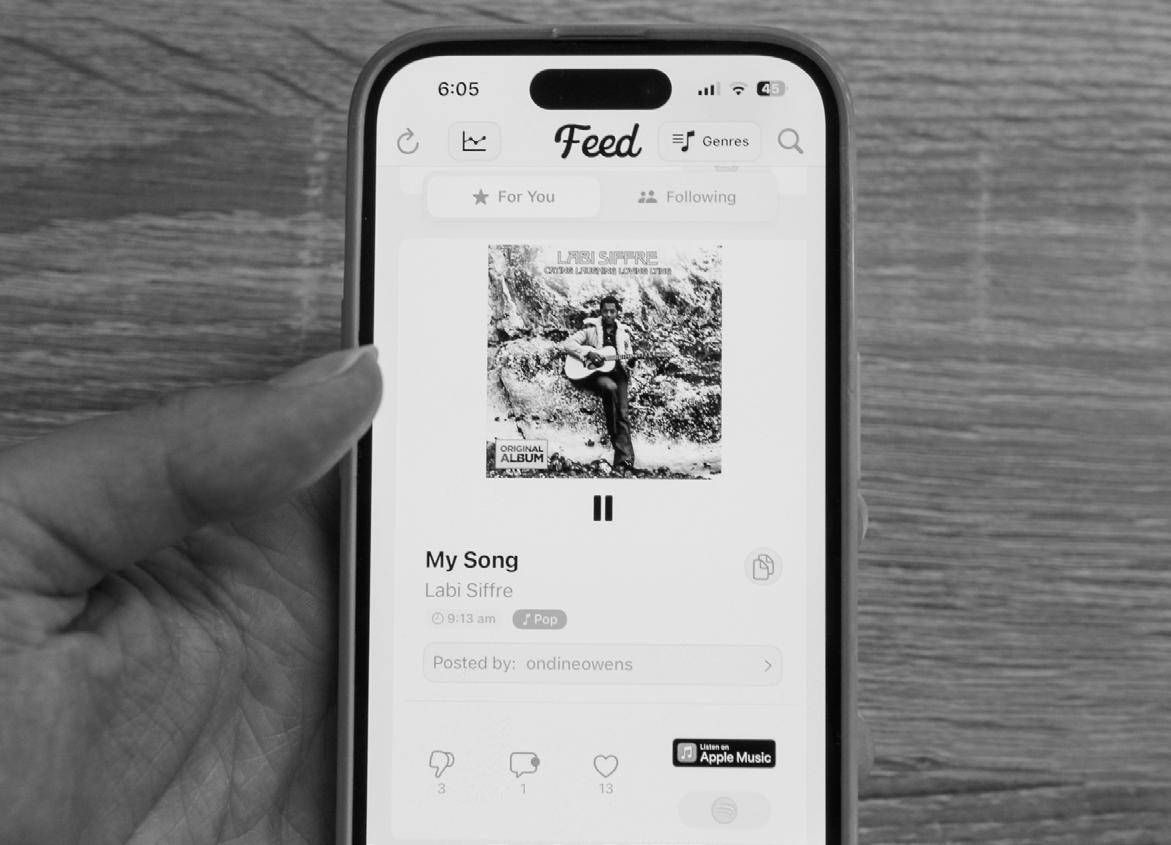
likes having a way to “get new music surefire every single day,” as her Spotify algorithm often feeds her the same 200 or 300 songs.
She added it’s hard to keep up with the family and friend’s music tastes back home, but after getting them to download Sway, Thomas can see what they’re listening to every day.
“It helps me, in a weird way, stay in touch with those people, but also, I get new music,” Thomas said. “It’s a win-win.”
Senior Sasha McLeod said she enjoys being introduced to new music on Sway, but also loves discovering she shares her music taste with other users.
“That’s a good feeling, that someone has the same taste as you,” McLeod said. “When someone plays a song and I’m like, ‘Oh my gosh. I love that song,’ it’s a connection that you have with someone.”
Mroue began Sway as a personal project, but he said as a college student, working on the app can be time consuming.
However, he said the more feedback and ideas he received from friends, the more motivation he had to release the app. He worked on the app for six to seven hours per day because he wanted to release it before he graduates in May.
“It helps to be still in college because you’re surrounded by your users who will constantly tell you what needs improving, what needs to do better,” Mroue said. “It’s real-time feedback, which is great, even being part of
the college community, knowing what people like, hearing feedback either negative or positive. It’s all around you.”
One debated feature of Sway is its inclusion of “dislikes,” particularly the ability for viewers to see the number of dislikes and likes on a posted song, Malin said, though he disagrees with those who oppose the feature.
“Their argument for that was [it would] maybe discourage people from posting the songs,” Malin said. “But, I was pro-dislike because I thought that it was something more unique about the app … and also I feel like it adds a little level of competition.”
Senior Sara Alkooheji also helps Mroue with tweaks to the app, such as proposing he add a feature to filter the feed by genre.
Alkooheji also designed the logo for the app — a musical note with a letter “S” integrated into it. She said as a friend of Mroue’s, she enjoys being able to provide feedback for the app.
“We always want to improve the app, and I hope everyone enjoys it,” Alkooheji said.
Mroue said continuing to update the app after its launch has proven more efficient.
He spent two years focusing on smaller details and touch-ups for “Happening,” an events-based social media app he worked on developing a few years ago. By the time it was released, Mroue said he and his collaborators realized it wasn’t the greatest idea and “put it back to the drawing board.”
“What I learned from my last
BY MOHAN ZHANG Contributing Writer
When opening a new browser tab, Shiv Dutt saw an opportunity.
Dutt is the founder and CEO of MeaVana, a fast-growing Google Chrome extension that allows users to customize their dashboard to their needs.
“When you open a new tab on your browser, instead of that boring Google page, you get a really personalized, customized dashboard with your pictures, your codes, your information,” Dutt said.
Dutt said MeaVana increases the “productivity functionality” of the internet with three main use cases: building community, digital resource linking and productivity.
“We had seen some players in the market do very simple wallpaper apps and they already had a lot of usage,” Dutt said. “We felt that we could take it to the next level.”
MeaVana currently has more than 600,000 users around the world, according to Dutt.
Adewale Aderibigbe, MeaVana’s UI/UX product designer, said when they designed and launched the product, they reached out to several companies and branches — such as Nike, Coca-Cola and Mercedes.
However, after recognizing that younger people made up a large percentage of users, Dutt shifted focus toward expanding MeaVana’s presence on college campuses and tailoring the platform to academic life and student needs.
Aderibigbe said they gathered input from students at different schools to understand what features would be most useful.
“What we did first was to create a template so as to acquire students from those schools, to learn more about the school we are focusing on,” he said.
By conducting usability tests, Aderibigbe said they learned how to tailor dashboards to individual schools — including Boston University.
Rashik Hossain, a graduate student in the Duan Family Center for Computing and Data Sciences and a College of Arts and Sciences alum, is currently an intern for MeaVana.
MeaVana is exciting because it is not very “corporate-minded,” said Hossain. “There’s not a lot of pressure from the founders’ side because they give most of the free range [to] us students.”
After attending BU for both his undergraduate and graduate degrees, Hossain said thinking
about the websites he used often helped him find easier ways to link different things together for current students.
Students can find those BUspecific features in one place. However students can still personalize their own browsers, Hossain said.
“Not all BU students are going to be the same,” he said. “So there are options for you to customize and change, add or subtract. It’s all very exciting.”
Hossain highlighted the quote section at the bottom of the BU dashboard which can feature quotes from famous alumni, including Martin Luther King Jr. and Julianne Moore.
Hossain said the group hopes to involve students from every college and recruit as many interns as possible.
“Undergrads from the College of Communication could curate imagery and wallpapers and make a separate gallery for Boston University images,” he said. “When you’re speaking from a technical side of it, the CS students can generate their own API hooks and work in the back-end side of things.”
Dutt added they are looking to bring more undergraduate students
app was that you don’t need to be perfect,” Mroue said. “You don’t have to have a finished, perfect product to release.”
After Sway’s release, Mroue’s friends joined him to market the app at BU and other college campuses, including Tufts University and Pennsylvania State University.
The group gave away donuts in exchange for downloading Sway Wednesday at the George Sherman Union.
“I think organic growth is important, but at the same time, you need the initial step to get people on the app,” Mroue said. “Just get the app, and then if it entices you to post, then that’s great.”
Malin said young people are always listening to music — which he has seen on BU’s campus with students walking and studying with headphones on all the time — and Sway integrating that into a social media platform will bolster its success.
“Young people do a lot of interacting with their friends and other people online through social media,” Malin said. “Interacting through music and being able to like music and share it with your friends, I think obviously that will definitely attract a younger crowd.”
He said he loves using Sway and looks forward to seeing what direction Mroue takes it.
“Even without knowing [Mroue] or him being my friend, I’d still download the app,” Malin said. “It’s just awesome to see my friend start a new app that’s got such a great idea and premise behind it.”
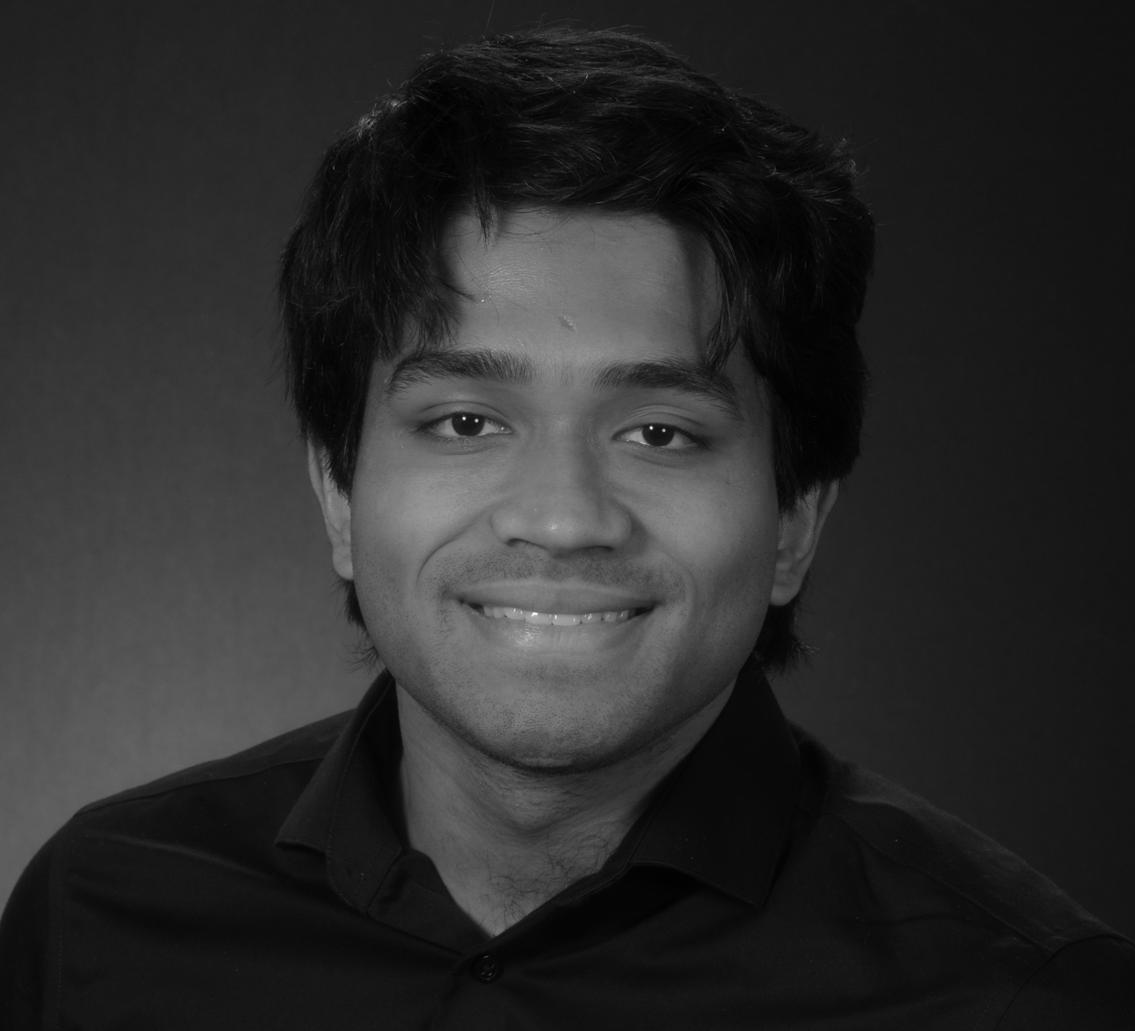
on board as they hope to cater more to them.
“We have options in different capacities,” said Dutt. “We have campus ambassador roles, we have campus master roles [and] we have growth marketers. We want to create a good team structure.”
As MeaVana expands its presence on campus, flexibility and
personalization remain central to its mission.
“If you want a maximal dashboard for your browser, then you go for it. If you want a completely minimal one, then you can also do that,” Hossain said.
“We’re basically giving students and users the opportunity to do whatever they want here.”
BY SARAH CRUZ
Photo Co-Editor
Japan Festival Boston was held at Boston Common April 26 and 27, welcoming Boston residents to Japanese culture. They hosted many performers, held culture and sustainability workshops, served food and had an array of booths.




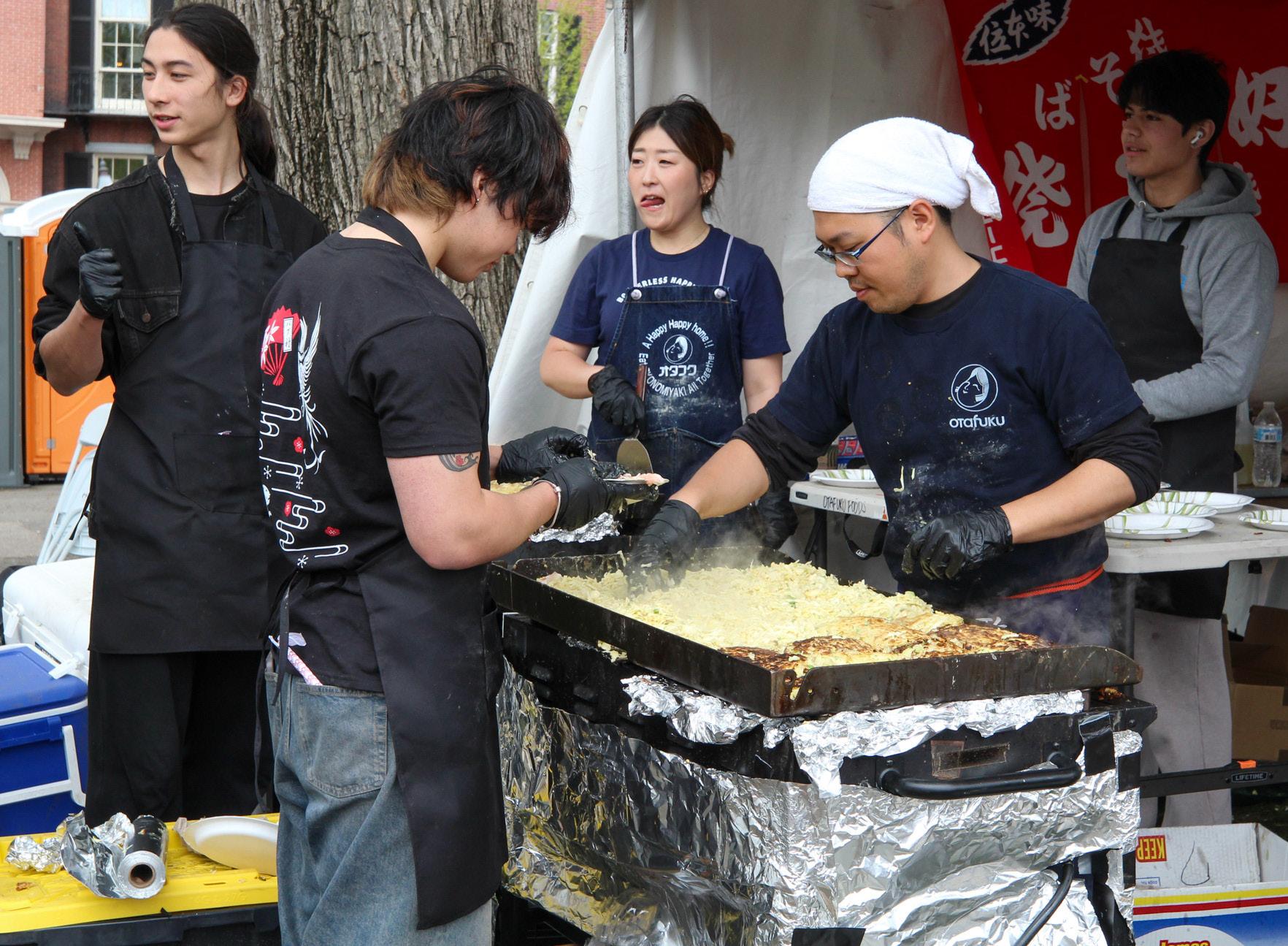
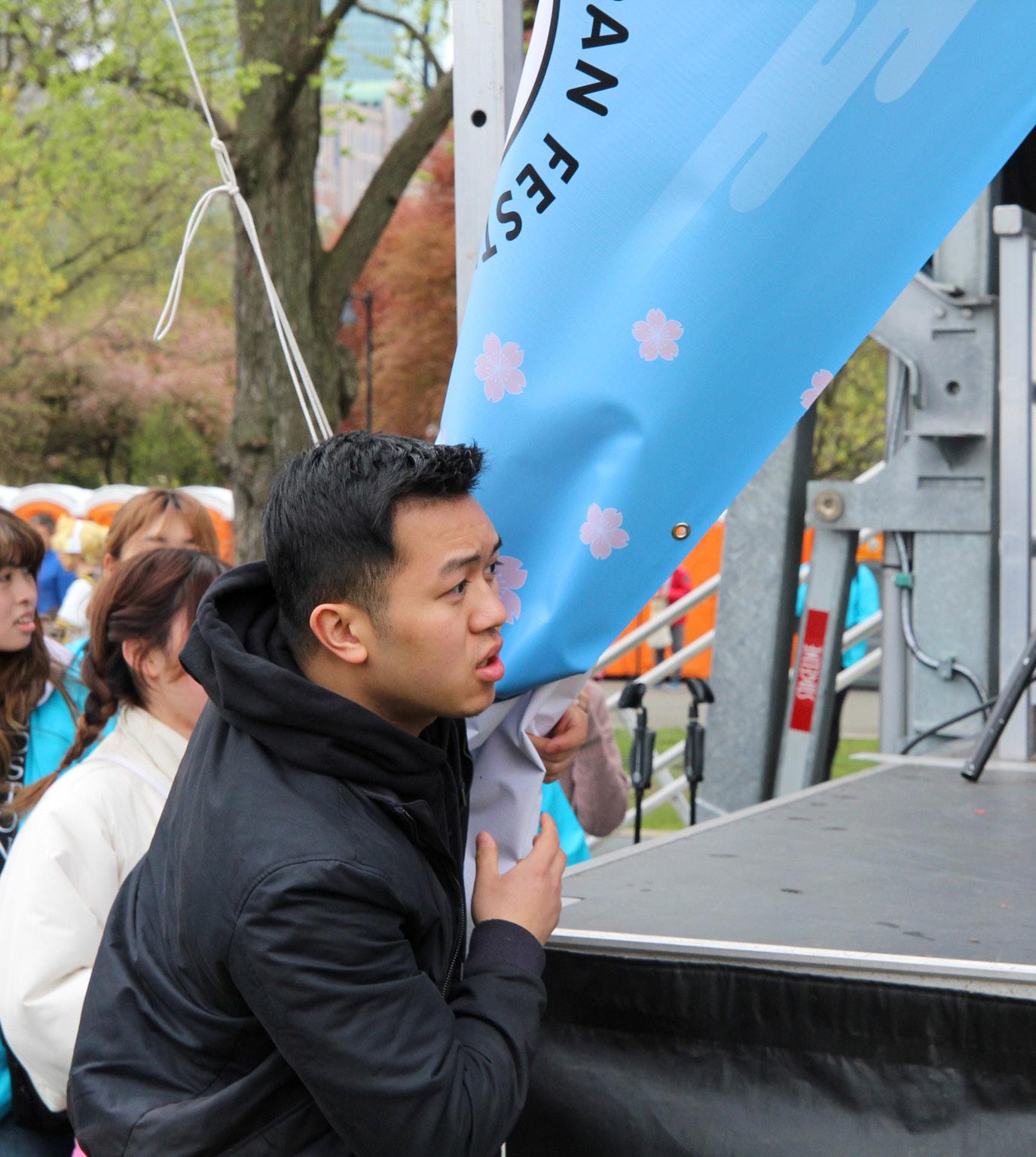
‘The silence is deafening’: Boston University community reacts to DEI changes, national
BY THE DAILY FREE PRESS INVESTIGATIVE TEAM
Diversity and inclusion programs brought Raul Fernandez from a segregated, predominantly Latino community in the Bronx to Boston University.
Now a senior lecturer at Wheelock College of Education and Development, Fernandez teaches classes about improving diversity programs in education. But his work at BU and the future of DEI programs across the country is uncertain.
The Office of Community & Inclusion, which includes the office of Diversity & Inclusion, will move under the Office of the President, according to an email sent by BU Provost and Chief Academic Officer Gloria Waters to faculty and staff Thursday afternoon.
“Connecting this work more concretely to the strategic priorities in the Office of the President will allow us to best support our students, faculty, and staff moving forward,” Waters wrote.
As part of this transition, Victoria Sahani, associate provost for Community & Inclusion, will step down from her position and return to the School of Law faculty, effective July 1.
Fernandez said the nature of the changes was not adequately explained in the email and he would have preferred “more indepth communication” about changes to Community & Inclusion.
Waters wrote that she “[hoped] this broader visibility into our structure helps clarify how we are working to advance our shared mission.”
“It doesn’t at all clarify that,” Fernanedez said in direct response.
Fernandez added he has a lot of questions about this change and hopes for a change in the decision-making process.
“My hope is that … the president’s office, which now is going to be overseeing community inclusion, actually brings in faculty and staff and students to help shape the future work of that division and the offices within it,” Fernandez said.
The restructuring of the D&I office comes as the Trump
administration takes aim at DEI programs at universities across the country.
Craig Trainor, acting assistant secretary for civil rights in the U.S. Department of Education, published a “Dear Colleague” letter Feb. 14 addressed to educational institutions receiving federal funding across the country.
The letter accused these institutions of promoting “racial discrimination,” particularly against white and Asian students “under the banner of ‘diversity, equity, and inclusion.’”
“Institutions that fail to comply with federal civil rights law may, consistent with applicable law, face potential loss of federal funding,” he wrote. He provided educational institutions 14 days to answer the written demands.
“It’s preposterous,” said Fernandez.
He said the letter did not define what DEI is and “just says you have to get rid of it.”
Fernandez said Waters told faculty in a March 5 meeting nothing had been changed regarding D&I programs even though he had heard programs were changed, cut or eliminated.
A BU employeewho is familiar with the matter, who did not wish to be identified for fear of retribution, said multiple D&I programs had been “indefinitely paused with no explanation” in the days following the “Dear Colleague” letter. Those decisions were advised by the Office of General Counsel, BU’s in-house legal office.
“[BU D&I’s] work is being taken away from us and we don’t really know why and we don’t really know what’s next.” they said. “It’s demoralizing, to say the least.”
BU’s Emerging Scholars program is sponsored by the University’s D&I office and hosts late-stage doctoral candidates from across the country to participate in “networking and professional development opportunities, research presentations, panel discussions, and mentorship” at the University, according to its website.
Emerging Scholar and West Virginia State University doctoral candidate Briana Edwards
was invited to BU Feb. 21 to present her research on ageism in the workplace. She called the event, which Fernandez helped organize, “one of the most enlightening experiences” in her academic journey.
In the days leading up to the event, Fernandez said he received communications from the Office of D&I to remove references to the office from flyers advertising the event. Not long after the event, he was told the program was canceled.
“It really is hurtful when DEI is removed from education, because it’s such a large portion of what education is truly about, to learn about different people, different places and different things.” Edwards said.
Using the Wayback Machine, The Daily Free Press found the Emerging Scholars section of the website was significantly changed between December 2024 and now. The current version of the website has removed all mention of the exclusion of racial or ethnic groups from BU, the “goals of the program” list and the “how to apply” section.
Fernandez spoke at the Q&A portion of the March 31 faculty assembly and expressed he wanted BU to admit the actions of the federal government are wrong.
“The silence, not just from BU, but from so many, is deafening,” Fernandez said during the Q&A.
In response, Gilliam said, “There are days when I would love to just yell. But I don’t think at this point that that is the most effective.”
Fernandez said in an interview with the Daily Free Press that after that meeting it was, “the first time in a long time I’ve been just sad.”
Gilliam signed the American Association of Colleges and Universities public statement called “A Call for Constructive Engagement” April 22. It unifies leaders of American colleges, universities and scholarly societies against “unprecedented government overreach and political interference” affecting American higher education.
BU’s AAUP chapter also joined an amicus brief with more than 20 universities last month calling for an end to federal government

actions that “subjects the entire system of higher education in the United States to a shock that threatens serious and lasting damage,” according to the brief.
“BU needs to establish a mutual academic defense compact. It needs to do so as soon as it can with other universities,” said Joseph Harris, co-president of BU’s chapter of the American Association of University Professors.
The “mutual defense compact” is a statement of solidarity amongst universities where participating universities vow to fund a shared defense reserve for any university facing legal or political threats.
Brian Cleary, a professor of computing and data sciences, biomedical engineering and biology and member of the BU AAUP, is helping lead the effort to garner support from BU’s Faculty Council.
Cleary said they want to form a “collective defense to safeguard our sort of shared values around academic freedom, equality, democratic governance” with other universities.
“The idea is that individual universities responding on their own have much less power than mounting a collective response,” said Cleary.
While Gerry Leonard, BU professor of law, recognizes University leadership are in a different position than faculty, he said BU must also challenge the
lawfulness of executive orders that impact DEI programs and international students on campus.
To Leonard’s knowledge, BU has joined “essentially zero.” AAUP has joined lawsuits like those looking to block Trump’s “unlawful and unconstitutional” DEI orders and funding cuts.
While BU is a member of the AAUP, the University has only “submitted a strongly worded supporting statement” filed with an AAUP lawsuit seeking to block the US Department of Energy’s cuts to federal research grants.
“I am not trying to imply that BU should have joined or participated in all of these suits,” Leonard wrote in an April 30 email with a “BU on Trump Lawsuits” document attached. “But I would be curious to know why we have participated in practically none of them.”
Fernandez has been a part of the BU community for the past 30 years as a student and staff member, but he said he doesn’t know if the University is “going to have my back.”
“It’s hard to put on that scarlet and white and be proud of your university when you feel like they are not being honest with you about what they’re doing,” he said.
This article was written by Karyna Cheung, Nicole Abrams, Chloe Cramutola, Aayushi Datta, Bailey Scott and Madyline Swearing.
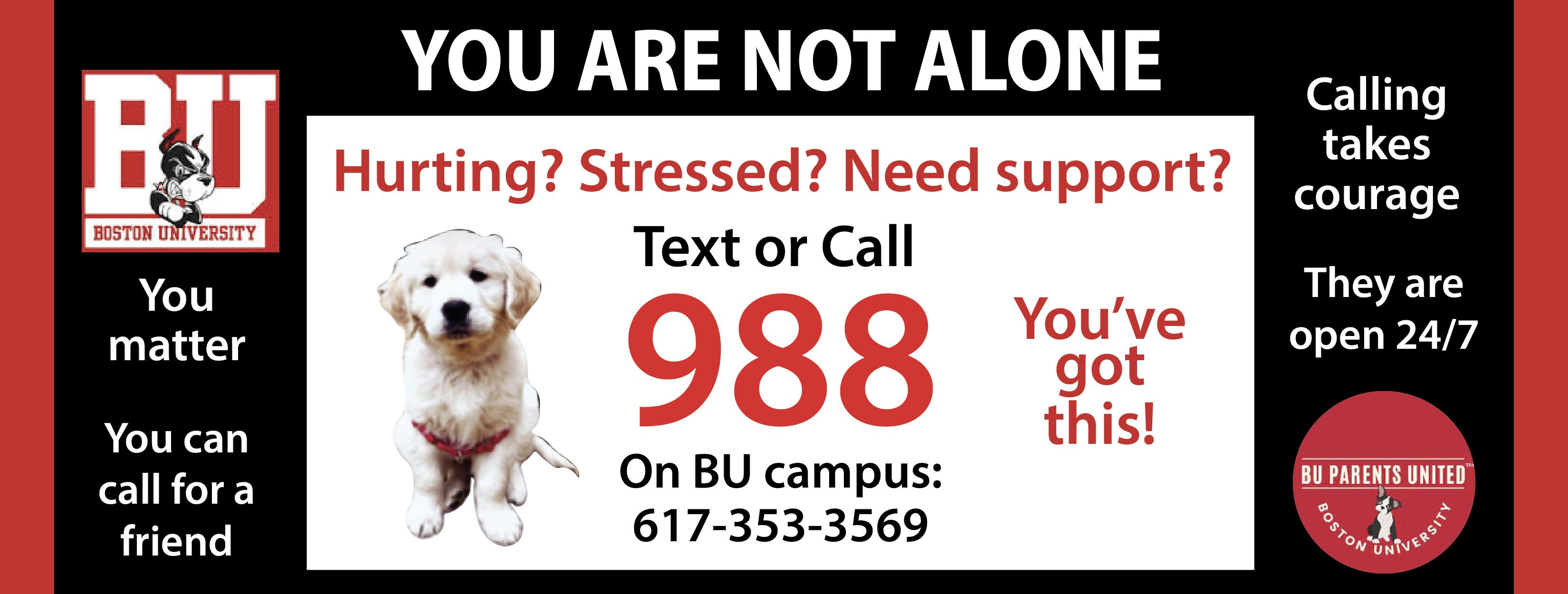
‘Pizzagate’ and how social media has created a pandemic
BY ELYSE BLOOM DFP Writer
“Hillary Clinton and Democratic Party elites are harboring a child sex trafficking ring under Comet Ping Pong, a Washington, D.C. pizza shop.”
Or so said the internet.
Emerging during the already contentious 2016 presidential election, “pizzagate” is a conspiracy theory that has haunted the internet ever since.
Beginning within the depths of 4chan, an anonymous image board — as every great story often does — the “pizzagate” theory caught tailwinds and made international headlines in the midst of the election news.
While most people found the story to be quite ridiculous, or even amusing, many altright internet users rallied wholeheartedly behind the story. Protesters surrounded Comet Ping Pong amidst the breaking news.
The conspiracy theory reached peak destruction when a “pizzagate” believer traveled across state lines to Washington, D.C. and fired a weapon in the restaurant, supposedly believing he was saving the children of the

Democratic-run sex trafficking scandal.
While ”pizzagate” is an extreme example, it is a constant reminder of how prevalent and dangerous fake news and misinformation can become.
The majority of people knew there were no real facts to back the claim that Hillary Clinton was harboring sex slaves. But the spread of misinformation can have real consequences.
A flurry of misinformation took the media by storm over the
Common misconceptions and non-factually based information circulated through social media, leading to mistrust of vaccine ingredients and side effects.
While scientists and institutions attempted to debunk all of these myths, the misinformation prevailed. According to Johns Hopkins Bloomberg School of Health, vaccine misinformation costs the U.S. economy between $50 and $300 million every day.
But fake news has existed long before the rise of social media, so how do we know that social media has perpetuated the rise of misinformation?
Recent research from Yale University and University of Southern California suggests that social media actually rewards the spread of fake news.
The study found that the most active users of Facebook were the ones who shared the largest proportion of false news headlines. These users were not sharing information that they believed in or that aligned with their ideologies, but were simply sharing what they believed would gain the most traction.
Platforms reward users that engage with them most frequently, so the users that spread information regardless of its accuracy are boosted by the social media algorithms.
Almost half of adolescent social media users see misinformation every single day. With up to 95% of youth ages 13-17 reporting social media usage, they are most vulnerable to misinformation spread through the algorithms.
At least half of current teenagers report that they get the majority of their news from social media.
What’s left if we can’t ask ‘what if’?
Have you ever drank a Gatorade on a hot day? Read a book on a Kindle? Taken Allegra for spring allergies?
If so, you have university researchers to thank — at the University of Florida, Massachusetts Institute of Technology and Georgetown University, respectively.
You almost certainly use a computer to complete thousands of daily tasks — likely to even read this article — again, thanks to research universities in the U.S.
Most of us take for granted the constant flow of research and invention that comes from research institutions — hotbeds of creativity at the forefront of innovation.
But the actions of the current presidential administration have disrupted this status quo.
April 30 marked the end of President Donald Trump’s first 100 days in office, an important benchmark used to measure how successfully a presidential administration has accomplished its stated goals and campaign promises.
Trump has certainly kept his word on education.
In March, he signed an executive order to dismantle the Department of Education, which subsequently saw its workforce cut almost in half to improve “efficiency” and “accountability,” in the words of Secretary of Education Linda McMahon.
In fiscal year 2023, almost $60 billion in federal research funding was distributed to
American universities, according to The New York Times. The Trump administration has already cancelled $11 billion of this funding, and has threatened further cuts.
Trump recently approved another executive order targeting university accreditation — a major step that institutions must complete before receiving federal aid funds for students.
The order accuses accreditors of furthering leftist ideology, as well as diversity, equity and inclusion efforts instead of focusing on academic excellence.
The Trump administration’s attacks on prestigious institutions like Harvard University have received criticism from students, faculty and journalists.
Although Ivy League schools have massive endowments — Harvard’s is more than $53 billion, with Yale University second at more than $42 billion — they are still heavily reliant on federal funding.
Universities have felt the impacts of this massive and unprecedented defunding immediately, with many struggling to grapple with a new reality of budget cuts.
In late March, Boston University’s administration announced a pause on merit raises for employees. Several other public and private institutions, including the University of Washington, the University of Pittsburgh and Stanford University, have also announced hiring freezes.
But the long-term ripple effects of this overhaul are
Knowing what we do about the spread of misinformation through these platforms, this is a major issue for younger generations.
I will admit that social media feels like the easiest way to consume news. We see news posts mixed in with Instagram stories, friends’ posts and influencers breaking up the feed. Simultaneously, you get your content fix for both enjoyment and information.
But we have to stop trusting social media with our news. Social media platforms are driven by profit, not by truth nor the betterment of society.
I have to remind myself of this truth at all times — everything I see on social media has the potential to be false. To stay diligent, informed citizens of society, we have to stay digitally literate.
Part of this requires having the tools and competence to know where to get trustworthy news and to second-guess everything that we learn from an unidentified source.
It is our individual responsibility to leave social media for our enjoyment and tune into alternate, more traditional sources for our news information.

unknown, and may be felt for generations.
CBS 60 Minutes Overtime released a segment April 27 highlighting the possibility of a “brain drain” among American scientists.
“Brain drain” is a more colloquial term for what sociologists call “human capital flight.” It describes the phenomenon of highly skilled and educated individuals emigrating to other countries to live and work.
According to research from fDi Intelligence, half of the 10 countries most impacted by “brain drain” in 2022 were developing island nations. Samoa ranked number one, followed by Jamaica, Micronesia, Haiti and Guyana.
For most of us, it may seem unthinkable for the U.S. to become the victim of such a trend. In the U.S. News & World Report 2024–2025 Best Global Universities ranking, American universities represented 297 out of 2,250 total institutions, and made up 14 of the top 20.
After all, don’t we live in the “land of opportunity?”
Don’t we have the highlytouted institutions, the historic pedigrees and the extensive
resources?
For now, but maybe not for long.
A record number of international students attended American universities during the 2023–2024 academic year — over 1.1 million, according to the Institute of International Education’s annual OpenDoors Report.
But as funding cuts continue, international students may be less likely to pursue degrees at American universities. This will be a major loss of diversity and collaboration, as well as the boost to the economy that comes with their enrollment.
In addition, more American students may begin to consider attending universities abroad, which will likely perpetuate existing socioeconomic inequalities that are already pervasive in higher education.
Funding cuts will impact financial aid and programs, such as the Pell Grant, for first-generation or low-income students. At the same time, wealthier students with the resources to get a degree abroad may be more likely to leave the country to attend highly-ranked international universities.
In 2024, colleges and
universities in the U.S. employed more than 3 million individuals, according to data from IBISWorld. As funding cuts force departments to shrink, there will be fewer positions open for professors and researchers — and that’s not even taking into account research, administrative and student support staff. At their best, colleges and universities should serve as a safe haven for freedom of expression, liberty of thought and diversity of ideas. Research is a key component of this lofty, but worthwhile, goal.
The idea of losing the innovation and progress provided by federally-funded university research is a scary one. The Trump administration has suggested that this responsibility should be taken on by the private sector, but it is the primary responsibility of the government — not corporations — to serve its citizens by fostering innovation that benefits all of us.
If the next generation of students and thinkers isn’t given the opportunity to ask “what if?” through research, our future as a country may be at risk.
This editorial was written by Opinion Co-Editor Ruby Voge.

Brendan Galvin, Editor-in-Chief
Sana Muneer, Managing Co-Editor
“That which we call a rose...would smell as sweet”
Constructor’s Note: Seven of these clues are Boston monikers ... can you get them all?
Over the past two years, it has been my privilege to construct games for The Daily Free Press. Thank you to all the editors-in-chief I’ve worked with — Chloe Patel, Andrew Burke-Stevenson, Mara Mellits and Brendan Galvin — for providing this opportunity to me. (Especially to Mara for creating the position!) Another thank you to the managing editors in my tenure as Master of Games — Siena Griffin, Andrew DiBiasio, Kayla Baltazar and Sana Muneer — for their support, and Brendan Nordstrom for being my “in” at the FreeP! To my Maji and Papí for testing my crosswords first, and the residents of 6 Buswell for their wall decor. (9-Down is sauce, by the way) And to all the crossword-doers of BU — thank you for your continued support.
Keep puzzling! Gracie Rohde, Master of Games
1. Piercing tools
5. With 9-Across, each of seven answers in this crossword is one of these for Boston
9. See 5-Across
13. Don’t ___ on the BU Seal!
14. CAS LF111 verb
15. Small biological units
16. ___ Tesfaye, “The Weeknd”
17. British jail
18. Make fun of
19. Hearkens to its religious founding (1/7)
22. Word of denial
23. Bro’s sibling
24. Sch. that begins in the spring semester
27. “Considering the current circumstances...”
32. Fatty, waxy compound (Ask a student in CH101!)
34. Bit
35. Handshake
36. In the know
37. Beacon, Mission and Bunker, as examples
40. Lead for a journalist
42. Overlook on a window
43. Vote in
44. BUPD officer, for example
46. Book after Exo. and before Num.
47. Standard
49. “Fish Tale” Actor Martin ___
52. Member of the class of ‘25, for short
53. ___ Life
55. LLC alt.
56. From a John Winthrop quote (And then interpolated by Reagan) (2/7)
62. Moor
66. ___ Campus (HoJo and Kenmore Square home)
67. “___ can you see?”
68. Take back
69. “Or ___!”
70. Ye ___ Towne (Bygone spelling) (3/7)
71. ___ town (In reference to a baked delicacy) (4/7)
72. Anjou or Bosc

73. Sets (down)
DOWN
1. “Stat!”
2. “The Beat of Boston University”
3. Ugly look
4. First-aid support
5. Nullified
6. Call ___ evening (stop working)
8. “Milkshake” singer
9. “The Matrix” protagonist
10. In the style of
11. Org. for the New England Revolution
12. Bos. time zone from Nov. to Mar.
15. Agate or amethyst
20. In ___ (Along with)
21. Archaic contraction
23. Winged mammal
24. The ___ of Liberty (5/7)
25. “Ithaca is ___” (Punny tourism line)
26. Vulnerable place to wear one’s heart
27. The ___ of America (For its universities) (6/7)
28. Travelers on the Charles, say
29. Lazy one
30. Animal in Allston
31. “Gilgamesh” and “The Iliad”
33. Female sheep
38. 270, for 54 and 45 (Ask a math major!)
39. Like potatoes and pasta
41. Black or Native American individual, for short
45. Tip
48. Hawaiian garland
50. Messenger molecule, for short
51. Frederick S. Pardee ___ of Global Studies
54. Rising sharply
57. Terrier: BU, Eli: ___
59. Old Italian coins
58. Bones, anatomically speaking (Ask a pre-med or Classics student)
59. Puerto Rico, por ejemplo
60. Word before luck or bug
61. Caustic cleaners
62. The ___ (or, BU’s general education requirements) (7/7)
63. Like Salem, in relation to Boston
64. “___ rule...”
65. Bask on BU Beach, say
BY GABRIEL MARTINS Contributing Writer
I never thought I needed perfection. I also never thought that a pair of jeans would make me feel complete. And for most people, they won’t.
Yet the image of my dream jeans led me down a rabbit hole of obsession — one that would consume me late at night. The videos of shuttle looms clacking yards of dark indigo denim distracted me every day.
I remember seeing a video of a man’s hands stained with natural indigo dye — a rustic image I thought would reclaim everything I missed from my non-physically taxing life.
I didn’t know I particularly needed a certain pair of jeans, nor that I’d become a snob for all things denim. All I remember was a TikTok of a well-dressed man speaking about how his jeans faded over time.
When we think of denim, of course blue jeans come to mind, but denim refers to the weaving of different strands of cotton. Generally, denim is woven with indigodyed cotton and standard white cotton — that’s why you see speckled white dots in your jeans.
denim are passed through shuttle looms that give the fabric ends a “self edge,” hence the name.
Selvedge denim isn’t inherently better than standard jeans, but it’s more durable and has a certain charm. Plus, my neurons fire every time I see the small glimpse of selvedge ID — a stripe of colored thread — when they’re cuffed.
Japan has kept true to the classic traditions of denim manufacturing. There, to this day, the cotton threads are handdyed using natural indigo dyes, which age the jeans over time.
people develop outlines of phones and wallets in their pockets. I’ve seen someone develop a fanned fading by their front right belt loop where they kept their keys.
The jeans became proof of the life you lived. After seeing that, I fell in love with them.
I couldn’t stop thinking about them. I’d check the comments on any TikTok that mentioned selvedge jeans. I’d write down names which introduced me to more brands than I could count.
I’d screenshot jeans and Google reverse image search them to get hints of brands.
Baldwin and even Miles Davis. They would roll in their graves just to get a look at me as I walked in a pair of jeans that would make me a staple and a godsend.
I found a few pairs I deemed worthy, but my God, were they expensive. The standard pair can cost an average of $300.
Mind you, I’m a broke college student.
on a spring break trip to Los Angeles. When the plane arrived, my wallet was set on one thing. I drove down La Brea Avenue the next morning, and when I saw the wrought iron storefront of Self Edge, my heart skipped a beat.
Today was the day I’d get my jeans.
Inside, the back wall was filled with racks of dark blue jeans. It looked like a floating ocean against the dark brown walls and crimson rug. I brushed my hands through the denim, feeling the textured woven threads.

Selvedge is the traditional way that denim is woven. Yards of
So, the jeans sat in the back of my mind. Sometimes, I’d end up with spare change, maybe enough to buy the jeans, but I knew I didn’t want to mess up the hemming. I needed to see them in person.
As you wear the jeans, you’ll notice the creases becoming lighter as the pants mold to your body and belongings. Some
I couldn’t sleep.
I needed to watch more videos about selvedge denim. As I read online about how to care for selvedge denim — still not having a pair — videos of denim history would play in the background as if the knowledge was passively seeping into my mind.
I needed to look sexy and timeless in a pair of jeans that could rival James Dean and echo Hollywood royalty. I needed a pair of jeans that I could wear at home while writing, while I’m fixing my car or at a Saturday night dinner with a blazer.
EMMA CLEMENT | GRAPHICS EDITOR
They’d be a pair of jeans that years from now would make people wonder, “How did he look so cool?”
I’d look like those pictures of suave intellectuals from the ‘60s, like Allen Ginsberg, James
Unfortunately, Boston isn’t a haven for the niche fashion trends that I’ve hyperfixated on.
I’d learned about a store called “Self Edge” — it had a pretty unfortunate name, but one that called to what they sold. They had a few locations, the nearest one being in New York. Seeing that I wasn’t going to New York anytime soon, I had to wait.
I had to do more research — and a nearly exhaustive amount at that.
I added the jeans I wanted — the Sugar Cane Okinawa jeans in a size 38 with a custom hem — into my cart on the Self Edge website. I looked for used pairs on eBay, and I even translated different Japanese websites into English to see if they could import a pair at a discounted price.
Then, an opportunity struck
I tried a few pairs. They were incredibly stiff at that time, but fit above my belly button and hugged my lower back.
It was unavoidable — I had to have a pair.
A salesperson cuffed them to the length I wanted, then marked them with chalk. The hemming would take a few days before they were ready, so I had to get them shipped.
They arrived in Boston the day I arrived back from my trip to California. I nearly ripped the box apart and put the jeans on. Needless to say, it’s been a match made in heaven.
At this point, they’re another pair of jeans. I wear them as I do my work and sit on the train. When the sun hits the jeans through my windows, there’s a subtle cobalt coming through the dark navy denim. But my God, I feel great in them.
BY HAZEL NYSTROM Staff Writer
When I picked up Suzanne Collins’ newest novel, I was hesitant. As the latest installment in the iconic Hunger Games franchise, I feared this 2025 prequel might feel like a shallow cash-grab.
However, I’m happy to report that “Sunrise on the Reaping” proved me wrong. A gruesome tale of survival and loss, Collins’ newest novel brings you back into the cruel country of Panem.
Taking place around a quarter of a century before the events of the original series, the novel follows Haymitch Abernathy, the hardened, alcoholic mentor of iconic heroine Katniss Everdeen, as he competes in the 50th Hunger Games.
The novel is classic Collins writing — emotionally charged and unflinching in its portrayals of violence under oppression.
But “Sunrise on the Reaping” takes it to the next level.
Arguably Collins’ darkest book, this prequel reaches new levels of emotional maturity, adding grim texture to the familiar world.
In case you never picked up the original series or skipped out on the films, here’s what you need to know about the classic dystopian books.
In the world of The Hunger Games, society has collapsed and been replaced by the country of Panem, a totalitarian nation ruled by the wealthy Capitol. To keep its twelve districts in line,
the Capitol holds an annual event known as the Hunger Games.
Every year, in a day known as “the Reaping,” two children from each district, one boy and one girl, are chosen as tributes to compete in the games. They fight to the death until one lone victor remains, while the brutal games are being televised as entertainment for the Capitol’s affluent citizens.
Collins’ newest novel begins the same as the original “Hunger Games” — with “the Reaping.”
Marking the start of the Second Quarter Quell, the 50th Hunger Games has a twist: twice as many tributes are forced to endure the games.
Unlike the sarcastic, hardened mentor we meet in the original novel, younger Haymitch is principled, clever and lovesick. He dreams of building a life with Lenore Dove, a fellow District 12 member, singer and poet.
He’s also scrappy — he ferments illegal hooch, seeking to keep his little brother and mother safe by bringing home some extra cash and resources.
From the moment Haymitch is chosen at the Reaping ceremony, we see vignettes of the violence to come. A young boy attempts to flee the ceremony and is brutally shot and killed. The Capitol’s audience is all the wiser as they stream a picture-perfect edit to those watching — one that is free of murder.
Collins continues the pictureesque theme as we enter the arena for the 50th Hunger Games. Set in a dense, mountainous
forest, the terrain is deceptively beautiful.
However, the landscape’s glamorous facade quickly fades as it is equipped with poisonous flora and bioengineered fauna.
Haymitch’s experience in the arena is visceral, marked with harrowing moments of violence, betrayal and constant reminders of the Capitol’s control. Collins spares no details of the horrors that shape the numbed mentor we come to know.
But don’t worry, “Sunrise on the Reaping” isn’t all doom and gloom. Collins’ deep exploration
of connection and humanity saves the novel from simply being violence for the sake of violence.
Haymitch’s fellow District 12 members showcase a dynamic cast of characters.
Thirteen-year-old Louella is brave yet tragic. Wyatt is a pragmatic figure, constantly calculating their odds. Maysilee is sarcastic and savvy, and her kindhearted nature breaks through her tough exterior.
Together, the District 12 tributes refuse to be puppets for the Capitol’s spectacle and vow

together to break the broken system — before it breaks them.
Collins uses her secondary characters as reminders of what goes on beneath the bloodshed. Each brutal death, personal tragedy and act of resistance weaves together to form the horrifying tapestry of the Capitol’s cruelty.
“Sunrise on the Reaping” is filled with death and despair, but there are moments of respite.
Haymitch’s relentless determination provides hopeful moments of rebellion against the Capitol’s regime. In the darkest moments, sparks of resistance continue to fuel the District 12 tributes.
Collins gives us an unflinching description of the horrors of the Hunger Games and the humanity that perseveres.
As is true of most Collins’ novels, the world-building in this prequel is rich and textured. We delve further into the world of “The Hunger Games” — and for those who read the original series, Collins provides captivating context for wellknown characters.
Collins builds tension brilliantly, and her pacing is relentless. If you haven’t read the original series, this novel can stand alone. But prepare yourself with a box of tissues as you dig into this gruesome novel.
“Sunrise of the Reaping” may not be for the faint of heart, but it’s certainly worth the read for both old fans of the series and newcomers to the world of “The Hunger Games.”
BY TOBY MOSES Associate Sports Editor
Graduate student pole vaulter
Alli Lofquist stood at the end of the runway, pole in hand, staring down the opening bar set at 3.52 meters — a height she cleared countless times before during her five-year career at Boston University.
But on her first attempt, she missed.
Unbothered, Lofquist walked back to her coach, shoulders relaxed and smiling. A few vaults later, she cleared 3.82 meters, a new personal best. Then came 3.92.
With that vault, in the final year of eligibility, Lofquist broke BU’s 24-year-old indoor pole vault record on a day that began with a miss.
“I was just shocked and so happy at that moment, to be there with all my teammates was something really special,” said Lofquist. “To have coaches that have supported me so much and everyone there to see it happen was really great for me, and it’s something I’m going to remember for life.”
Just months later, Lofquist claimed the outdoor school record with a jump of 3.81m, cementing her spot as the best women’s pole vaulter in school history.
“I got here in October of Alli’s junior year, and that first week she told me that she wanted to break the records,” said BU jumps coach Sara
Macey. “Since that first week, that’s always been the goal and the aspiration of what to get after.
Lofquist graduated from BU last year, unsure of whether she would return for her remaining year of eligibility. Lofquist was convinced by Macey and her teammates, and returned for a season where her leadership helped the team take home the Patriot League Indoor Track & Field Championship.
Pole vault is an unusual field event, in part due to its immense injury risk. Pole vaulting requires a particular type of athlete, according to Grant Cartwright, BU’s director of track and field.
“You’ve got to have a certain fearlessness, and you’ve got to laugh at what you’re doing in a way,” said Cartwright. “Not to make it sound bigger than what it is, but there is a little bit of life and death in each vault.”
Macey described Lofquist as a rare athlete, praising her consistency through hardship and mental fortitude. Cartwright and Macey commended Lofquist’s willingness to ask questions and desire for improvement.
Lofquist reflected on a disappointing performance in the Patriot League Outdoor Track & Field Championship two years ago — a moment she described as one of the most meaningful of her career. She no-heighted, failing all three attempts at the opening height.
“It was in that meet where I was just getting way too ahead of myself,” said Lofquist. “When I find myself doing that, I just like to remember that meet because it taught me so much about resilience.”
Pole vault is as taxing physically as it is mentally — a challenge Lofquist has learned to navigate with the help of her background in health science.
She graduated from BU in 2024 with a degree in health science and returned this year for her master’s degree in applied human development.
Starting this summer, she will attend the University of Michigan to pursue a Master of Science in athletic training.
Her time at BU gave her insight into the physical needs of the sport and helped her view it from a coaching perspective.
“My educational background in both my undergrad and now my master’s has really helped me understand more of a holistic point of view of the sport and understand the reasoning behind the training,” Lofquist said.
She said she is interested in the possibility of becoming an athletic trainer in the future — potentially in a collegiate track and field setting.
Lofquist has left a lasting mark on the program at BU, both as a name atop record books and as a role model for younger athletes.
“It always makes me smile looking back at how, when I
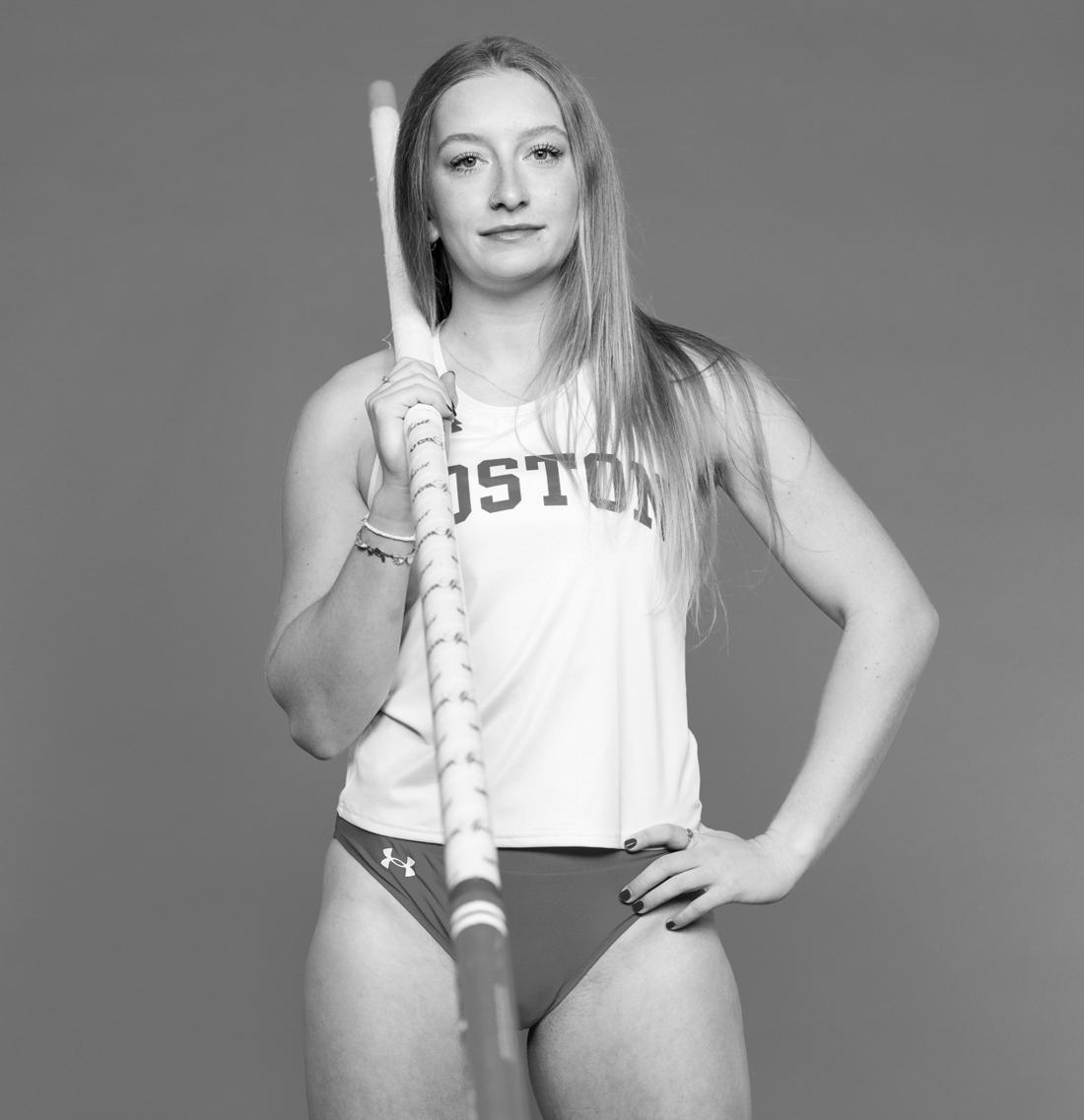
first met her, she has always been somebody that wanted to be a leader on the team,” said Macey. “I have really seen her trust her own voice and trust what she’s doing. She leads by example.”
She looks to carry her success into this year’s Patriot League Track & Field Outdoor Championship May 2 and 3, hoping to land a spot on the podium and help bring BU another championship.
Lofquist’s ultimate goal for the meet is to qualify for the
NCAA East Track & Field First Round, where she would compete against the nation’s top pole vaulters.
Whether or not she clears that bar, her impact on BU track and field is already cemented — in records, resilience and a prime example of work ethic and consistency.
“She’s a big reason why the women’s team believes in themselves so much,” said Macey. “Everything that she’s gotten so far, she’s earned every ounce of it.”
pretty awesome.”
The team nearly made history in 2024, but fell short.
“Last year we got second place, and I came into this national championship not really knowing if we were going to be able to get first place,” junior skater Grace Soroko said.
The adjustments the Terriers made going into the 2025 season paid off. “Our motto this year was just ‘slow and steady wins the race.’ We did what we had to do, and they did a great job,” head coach Andrea Mohns-Brillaud said.
It was another addition to the extensive resume of MohnsBrillaud, who has been at the helm of BU figure skating for each of its eight championships. Even for a leader accustomed to figure skating glory, the 2025 season provided a plethora of memorable moments.
“I love to see a [student] that doesn’t make the team freshman year, but perseveres,” Mohns-Brillaud said. “I had a junior this year that made the team who hadn’t skated freshman and sophomore year.
I have a senior that got to skate for the first time in nationals this year.”
The longer-tenured members of the team revitalized their efforts with a unique drive to
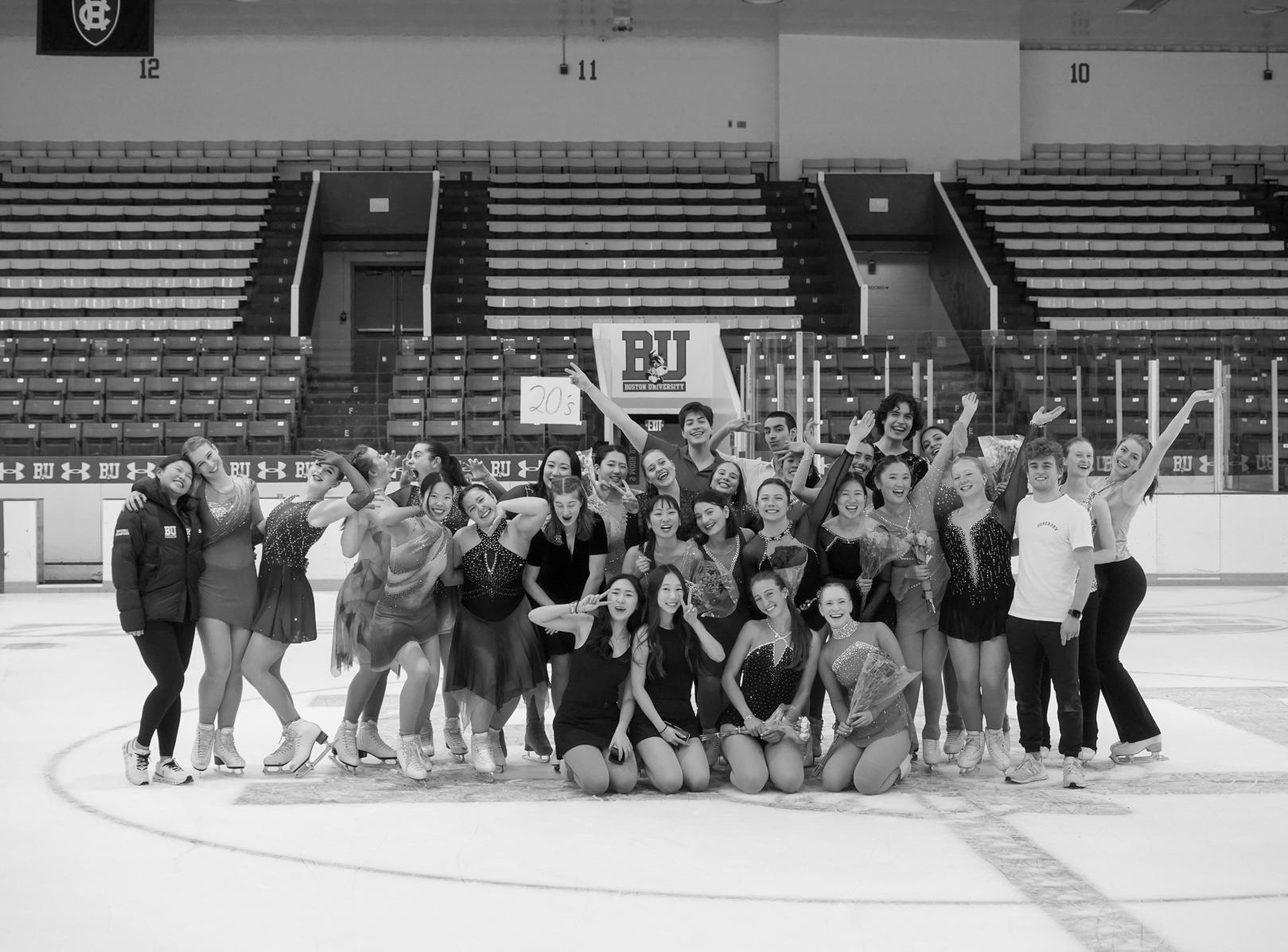
win, too. “In the last event, our senior Phillip Baker blew it out of the park doing his triple flip,” Mohns-Brillaud continued. “He said there was no other option, he had to win. So he did.”
But the Terriers’ successful season wasn’t without its hardships.
Mid-season, tragedy struck the figure skating world as a
flight carrying figure skating athletes, coaches and families crashed on its return trip from the National Development Camp in Wichita, Kansas in late January. The crash left no survivors.
Several BU athletes were personally affected. “A lot of our teammates lost people that they knew,” Soroko said.
“One of my teammates back home was at the National Development camp, and she lost a lot of friends. It came right before one of our regional competitions, and we had to go out and compete with all of that.”
The team was spurred on, redoubling their efforts to honor the memory of those lost.
“It actually pushed us further to continue skating, because at the end of the day they would not want us to stop,” Soroko said.
Further adversity visited the team during the finals.
“We had some injuries. We had some sickness at nationals,” Grice said. “Getting through some of those programs was kind of hard, but they did it, and they did awesome.”
Mohns-Brillaud credited the team’s strong connections and teamwork in getting them through the hard times. “I tell them all the time, what makes me more proud than winning a national championship is the friendships that they have and the bonds they make. When they graduate, they have friends for life,” she said.
“[Being a national champion] is unreal. It is insane,” Soroko said. “The team has worked so hard and we have developed such a strong community. We put it all out there in Indiana. At the end of the day, everyone put out their best.”
The team now waits to see which skaters will be with the team in its effort to repeat as champions next year.
“We have some great kids coming in and some great kids returning,” Mohns-Brillaud said. “Hopefully we’ll be okay for next year. We’ll be starting from scratch and building the team.”
BY BRENDAN GALVIN Editor-in-Chief
The 1992 USA “Dream Team.”
The 2016-2017 Golden State Warriors. The 2025 spring semester Daily Free Press Editorial Board.
When I think of the best teams ever to exist, these are the first three that come to mind.
From our early-semester bowling outing to our last print night May 1, it was nothing short of amazing to see this diverse and talented group come together five days a week to not only produce high-quality, multi-platform content but also grow as a team and as individuals.
My semester as editor-in-chief of The Daily Free Press has been exciting, eventful and eye-opening.
When I walked into the office Jan. 21 for our first day of publishing, I had only written or edited sports articles. My first three semesters at The FreeP were spent as a sports writer, covering games and writing a weekly baseball column.
In spring 2024, I became sports editor, leading a team of writers to cover BU Athletics and continue to publish columns on various professional sports.
After spending last fall abroad in Dublin, Ireland, I took on the position of editor-in-chief for the spring 2025 semester.
While I may have a solid command of writing game recaps and sports columns, I knew there would be a steep learning curve in editing sections I had never worked with before.
Had it not been for my two amazing Managing Co-Editors Kayla Baltazar and Sana Muneer I never would have made it out of this semester alive. Sana’s expertise in feature articles and passion for The FreeP, along with Kayla’s knowledge in news editing and multimedia content, kept this paper afloat.
This semester, we published more than 600 articles, more than recent semesters.
Sana and Kayla were my rocks throughout the spring. I went to them for second and third opinions on literally anything, from handling requests for name removals in old articles to dealing with two simultaneous water leaks in the office.
To both Kayla and Sana, I am forever grateful.
From the moment our pre-
semester meetings with each section began, I knew our work this spring would be exceptional.
In our meeting with Layout CoEditor Jenny Chen and Graphics and Layout Co-Editor Emma Clement, I felt their clear passion for designing our monthly print editions.
That effort and thought shone through in each edition this semester, especially in our 55th Anniversary Edition. The two worked together to create a full-page graphic for the front page, paying homage to The FreeP’s 10th Anniversary Edition.
Multimedia Editor Alexis Safranko continued The FreeP’s efforts to grow on social media, increasing our Instagram following by more than 700 followers and posting two of the top three mostliked posts on The Daily Free Press’ account.
I will never forget sitting with my back to the rest of the Editorial Board and guessing who was calling my name for a TikTok — I got 18 out of 20. Alexis’ content ideas for each print night not only grew our social media presence, but also increased camaraderie in the office.
Sports Editor Gabby Church expanded the section’s coverage significantly, covering figure skating, club soccer and a track and field trip to the World Championships. I was so proud to see the section I love most add columns on professional lacrosse, the Professional Women’s Hockey League and skiing — sports not often covered by college newspapers.
Podcast Editor Andrew Lay published quality episodes recapping each week’s stories. While he may not have been in the office often, his presence was felt through the revived section. I’m excited to see where the section goes next semester, with the prospect of adding different podcast genres.
Features Editors Anna Albrecht and Charlie Dippolito excelled at covering concerts, on-campus events, research and student-run businesses. Both of them lit up the room whenever they were in the office and never failed to put a smile on everyone’s face. I loved watching the two of them run the section’s weekly pitch meeting, hyping up stories to get writers to cover them and ending meetings with a “hands in” team cheer.
Lifestyle Editor Gabriella Di Dea published more than 100 articles, including weekly columns, one-off

book or movie reviews and her own recap of sophomore year.
The Lifestyle section has a different editing process than the others, and because Gabriella was so on top of her duties as editor, she technically never had to come into the office during the week. But I was always impressed that she still did — to edit, do homework or just spend time with the rest of the editorial team.
Opinion Co-Editors Ada Sussman and Ruby Voge not only continued to provide writers with a platform to share their thoughts and views through The FreeP, but also produced quality editorial articles of their own.
The two wrote a combined five editorials throughout the semester, including my favorite, an editorial on the changing relationship between BU Police Department and the BU community written for our Anniversary Edition.
Ada and Gabriella were also adamant advocates for Cava as our print night meals, sparking heated discussions in the office about where to buy dinner — a personal highlight of my semester.
Investigative Editor Chloe Cramutola published in-depth, quality articles all semester. My favorite was a deep dive into the ongoing construction of Warren Towers and its impact on students living there.
Chloe was able to take her section’s pitches and tips and turn them into long-form, thorough pieces of reporting. In just the

third semester of the Investigative Section, Chloe took it to new heights.
Photo Co-Editors Holly Gustavsen and Sarah Cruz published some of the most interesting and innovative galleries I have ever seen. For the Anniversary Edition, they connected with past FreeP photographers and photo editors for headshots, also including their favorite photos they took as BU students.
When we gave each section the creative freedom to connect The FreeP’s past with its present, I never imagined something like what Holly and Sarah did.
Master of Games Gracie Rohde consistently produced the most fun and engaging mini-crosswords I’ve ever played. A highlight of my night, three times a week, was previewing the mini and trying to complete it as quickly as I could.
Gracie also created longer-form crosswords for each of our prints.
In our third print edition, she even made a puzzle where clues in the crossword corresponded to their locations on a campus map.
Last but not least, our news editors — City Co-Editors Truman Dickerson and Sam Genzer and Campus Co-Editors Lauren Albano and Mady Swearing — were the four most dedicated and dependable editors in the office. Whenever there was breaking news on campus or around Boston, I could count on them to send a writer to cover or go out and cover it themselves.
Truman biked a total of eight miles to and from Tufts University to cover a protest, while Lauren and Sam both had weeks where they wrote at least four articles each. Mady was a part of one of the
biggest investigative stories of the semester, one that took months to write, and I was so impressed with the scope and depth of the story.
I want to give another huge thanks to Sana and Kayla, who were vital in making this semester a success.
Another shoutout to last fall’s Editor-in-Chief Mara Mellits, as well as Board of Directors President Ava Berger and Vice President Payton Renegar for their consistent support and guidance throughout the semester.
While I could not have gone the semester without their help, The Daily Free Press could not function without its writers, photographers, editors or readers. Without all of your hard work and support, none of this would be possible, and I am eternally grateful.
Next semester, I will step into the role of treasurer on The FreeP’s management board and pass the torch to Lauren Albano, who will be the editor-in-chief next fall. She, along with Co-Managing Editors Sam Genzer and Crystal Yormick, will lead the Editorial Board as “Top 3.”
I have complete confidence that The FreeP is in great hands and the three of them will continue the great work The Daily Free Press has done for the last 55 years.
This semester was nothing short of a roller coaster.
From the lows of an ant infestation in the office and a crashed website, to the highs of an anniversary celebration and a new website, there is nothing I would change about my semester as editor-in-chief.

